
© Gareth Jones
Journeys through the Tate Collection
Explore more than 80 works from the Tate collection for free
This display of art from the Tate collection considers the impact of the global movement of people on artists and art movements throughout the twentieth century and beyond. On display are works that explore themes of migration, colonialism, and international exchange, and how they are relevant to the history of Liverpool.
Visitors can expect to see works by artists including Anish Kapoor, Sonia Boyce, Chen Zhen, Njideka Akunyili Crosby and György Kepes.
Highlights include Hew Locke’s Armada 2019, a large-scale flotilla of boats and rafts suspended from the ceiling. The sailing vessels hold complex and multiple meetings, symbolic of colonial and post-colonial power as well as the artist’s own movement to and from Guyana as a child. Also on display is Mona Hatoum’s Measures of Distance 1988 which speaks of exile, disorientation, and a tremendous sense of loss the artist experienced as a result of separation caused by the war in Lebanon.
By exploring works like these, and how they resonate with local and global history, we can consider the relationship between Liverpool and the world that it looks out on.
This display is part of Tate Liverpool's Collection Route
Book free Collection ticket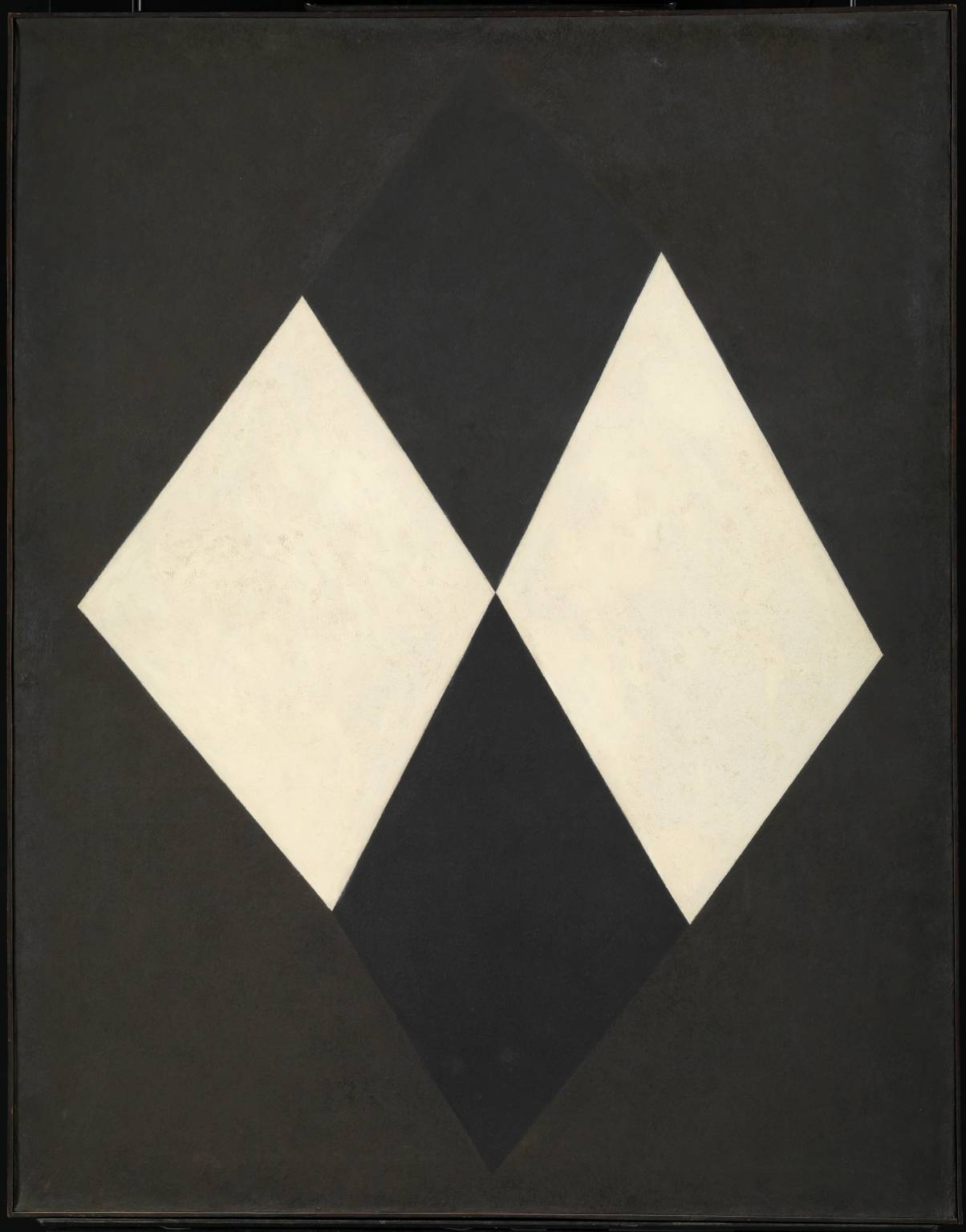
Mira Schendel, Untitled 1963
In this work, geometric figures in subdued colours are suspended in a dark, abstract background. The subtle use of texture and treatment of the surface adds a three-dimensional aspect to the painting. The forms are deliberately asymmetrical and hand-drawn, exemplifying the subtle subversion of European geometric abstraction in Brazilian art through the introduction of organic or destabilising elements. Schendel contributed to the development of Concrete and Neo-concrete art in Brazil during the 1960s, though she remained detached from those groups and developed a distinct and unique body of work.
Gallery label, May 2012
1/30
artworks in Journeys through the Tate Collection
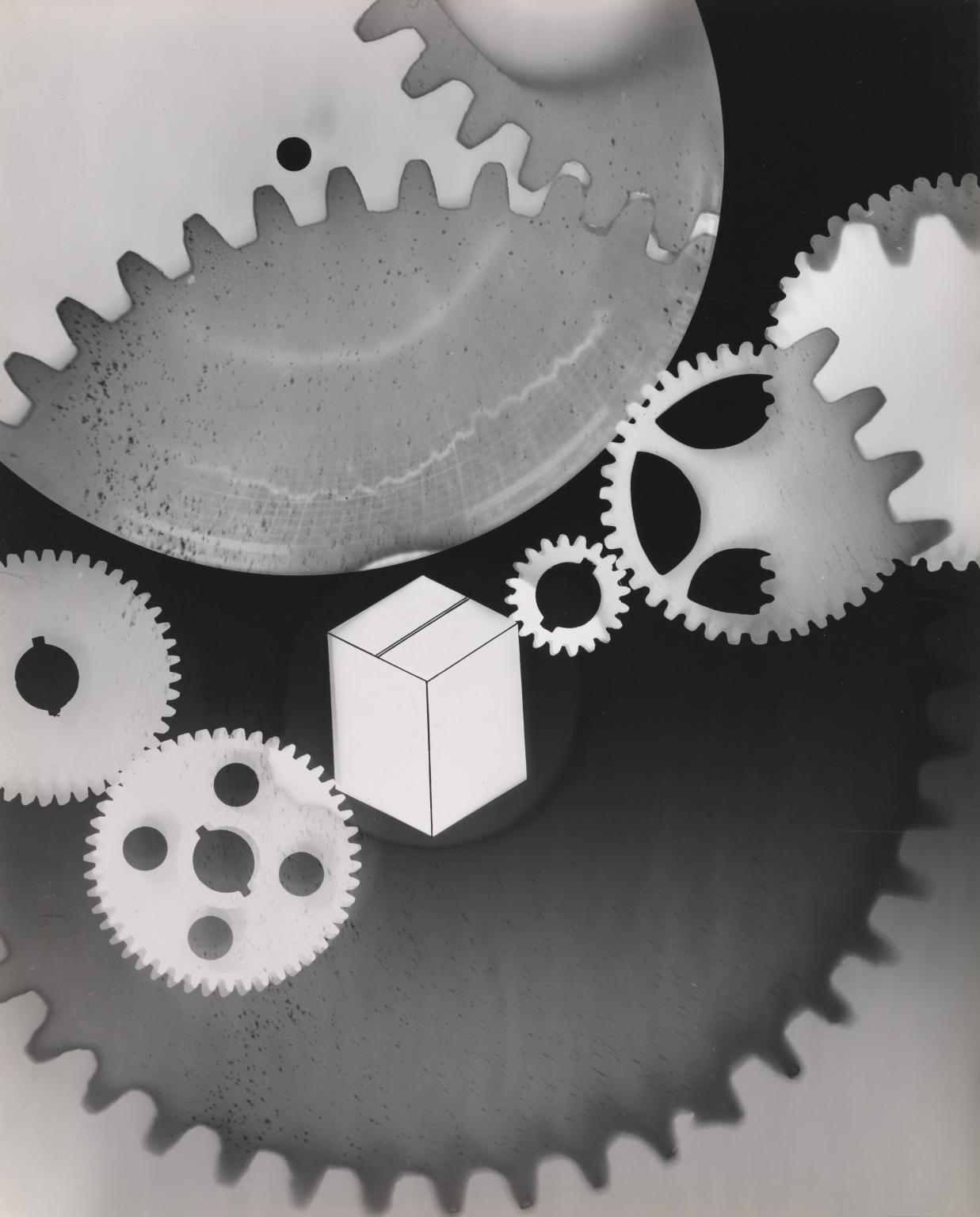
György Kepes, Gears 2 (Gears and Inked Carton) 1939–40
This is one of a large group of photograms and studies in modernist photography in Tate’s collection by the Hungarian-born photographer, painter, designer, teacher and writer, Gyorgy Kepes (see Tate P80532–P80568, T13973–T13975). They date from 1938 to the early 1940s and were made in the United States, where Kepes had emigrated in 1937. Kepes made his earliest photograms in Budapest, taking nature as his starting point, directly recording the process without a camera onto photosensitized surfaces. In the late 1920s Kepes joined the Berlin studio of the Hungarian artist and modernist photographer László Moholy-Nagy (1895–1946). Moholy-Nagy had been a teacher at the Bauhaus School in Germany and was one of the principals in promoting the values of the Bauhaus movement, as well as a pioneer who experimented with a multitude of materials and techniques. Kepes was introduced to the ‘new vision’ provided by the possibilities of modern art techniques while collaborating alongside Moholy-Nagy. He began to experiment with photograms himself – photographic prints made in the darkroom by placing objects directly onto light sensitive paper and exposing the paper to light. Later, he made prints he called ‘photo-drawings’, in which he applied paint to a glass plate that he then used as though it were a negative. Only a few of Kepes’s works from this earlier period survived the artist’s many moves in the 1930s and the Second World War.
2/30
artworks in Journeys through the Tate Collection
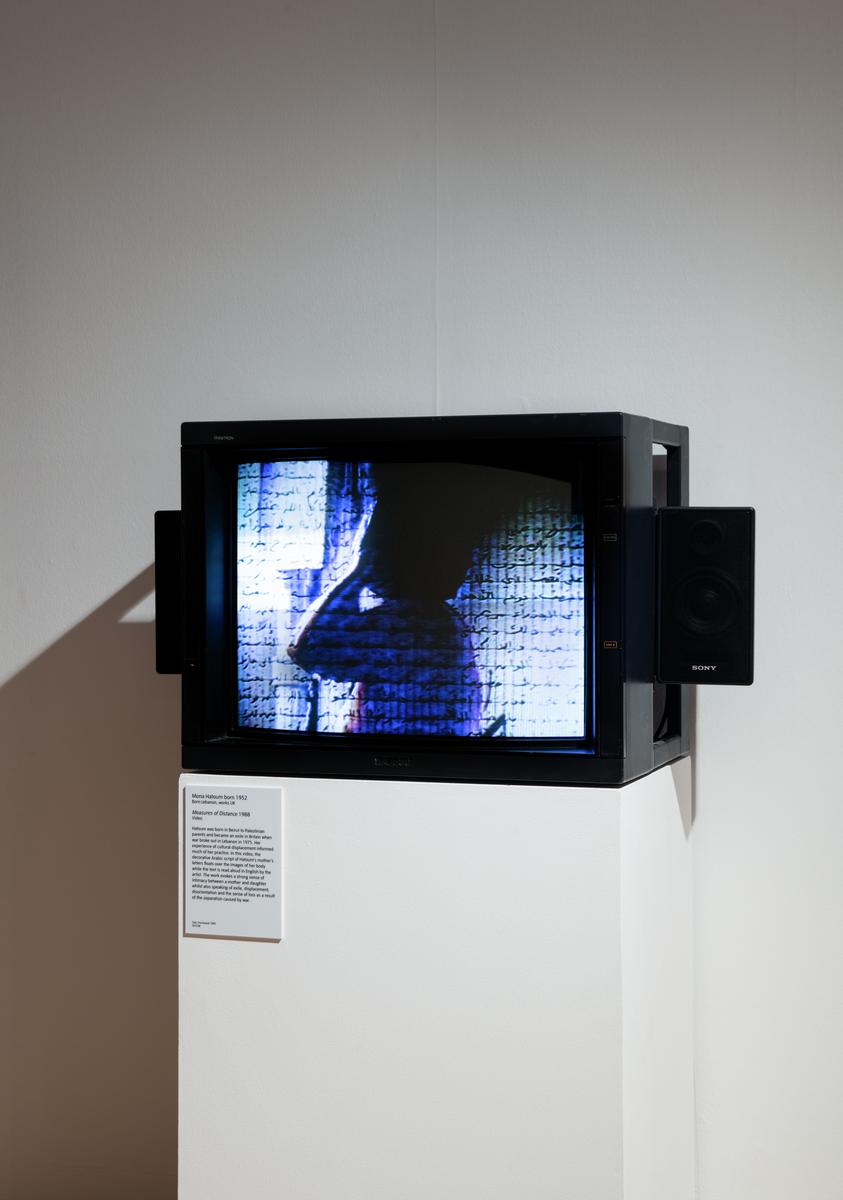
Mona Hatoum, Measures of Distance 1988
Mona Hatoum left Beirut in 1975 for a short visit to London. When war broke out in the Lebanon she found it impossible to return. In this video, letters from her mother in Beirut, written in Arabic, move across the screen. They are read aloud, in English, by the artist. Hatoum's mother is also heard, speaking openly about her feelings and sexuality, accompanied by images of her in the shower.
Hatoum's video suggests exile and displacement. She has said it also challenges 'the stereotype of Arab women as passive, mother as non-sexual being'.
Gallery label, November 2002
3/30
artworks in Journeys through the Tate Collection
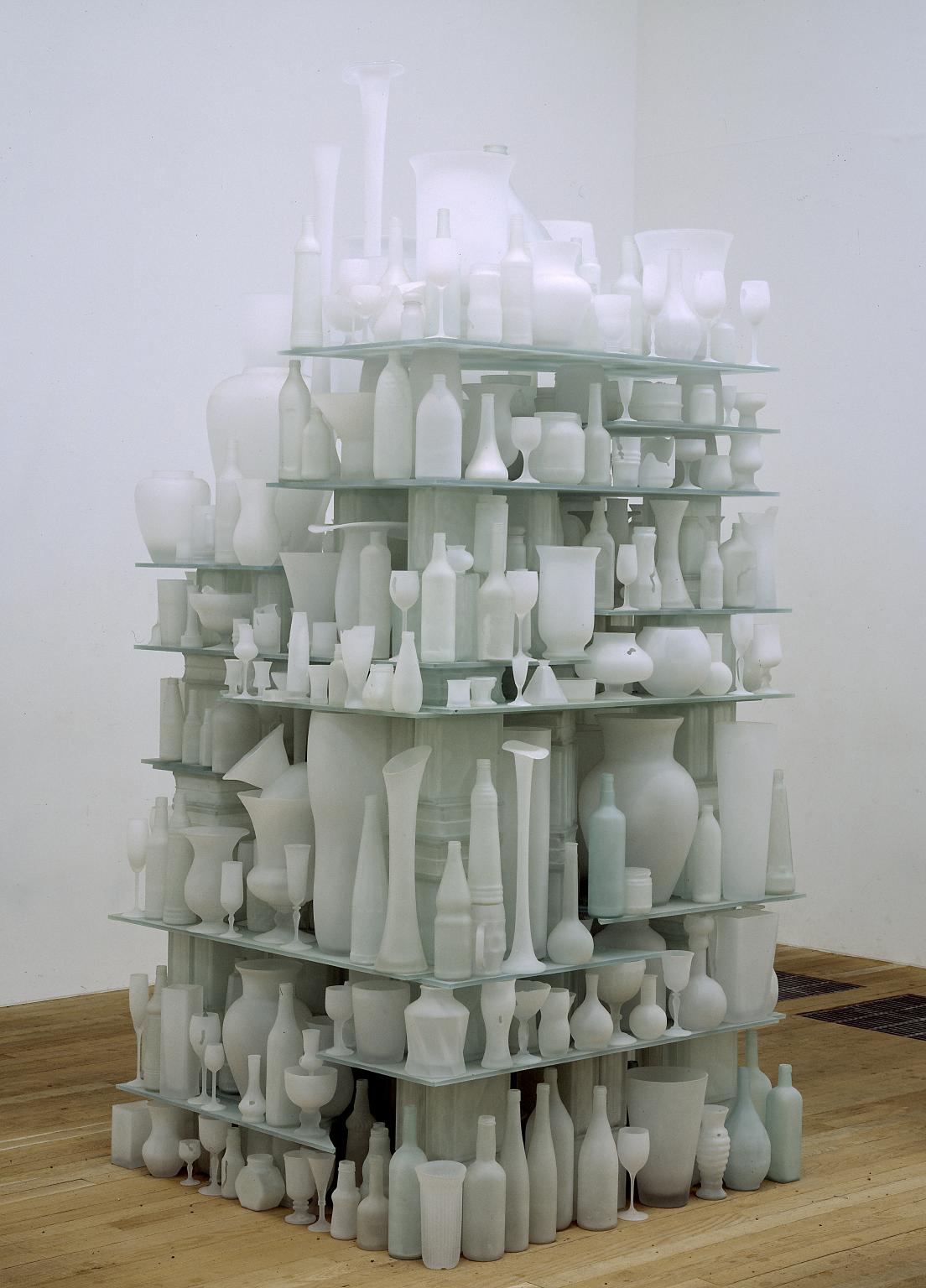
Tony Cragg, Cumulus 1998
Cumulus is comprised of glass vessels that have been sandblasted to a milky translucent finish. Their surfaces suggest the slow process of erosion, accelerated here by the use of modern technology. Each level of vases, bottles and bowls appears to support the glass shelf above. In fact, the shelves are supported by square glass bricks that form the central core of the sculpture.Cumulus is an ‘accumulation’, a word describing much of Cragg's sculptural practice. He is known for collecting and arranging found objects, with references to geology and archaeology, past and present, nature and culture.
Gallery label, May 2007
4/30
artworks in Journeys through the Tate Collection
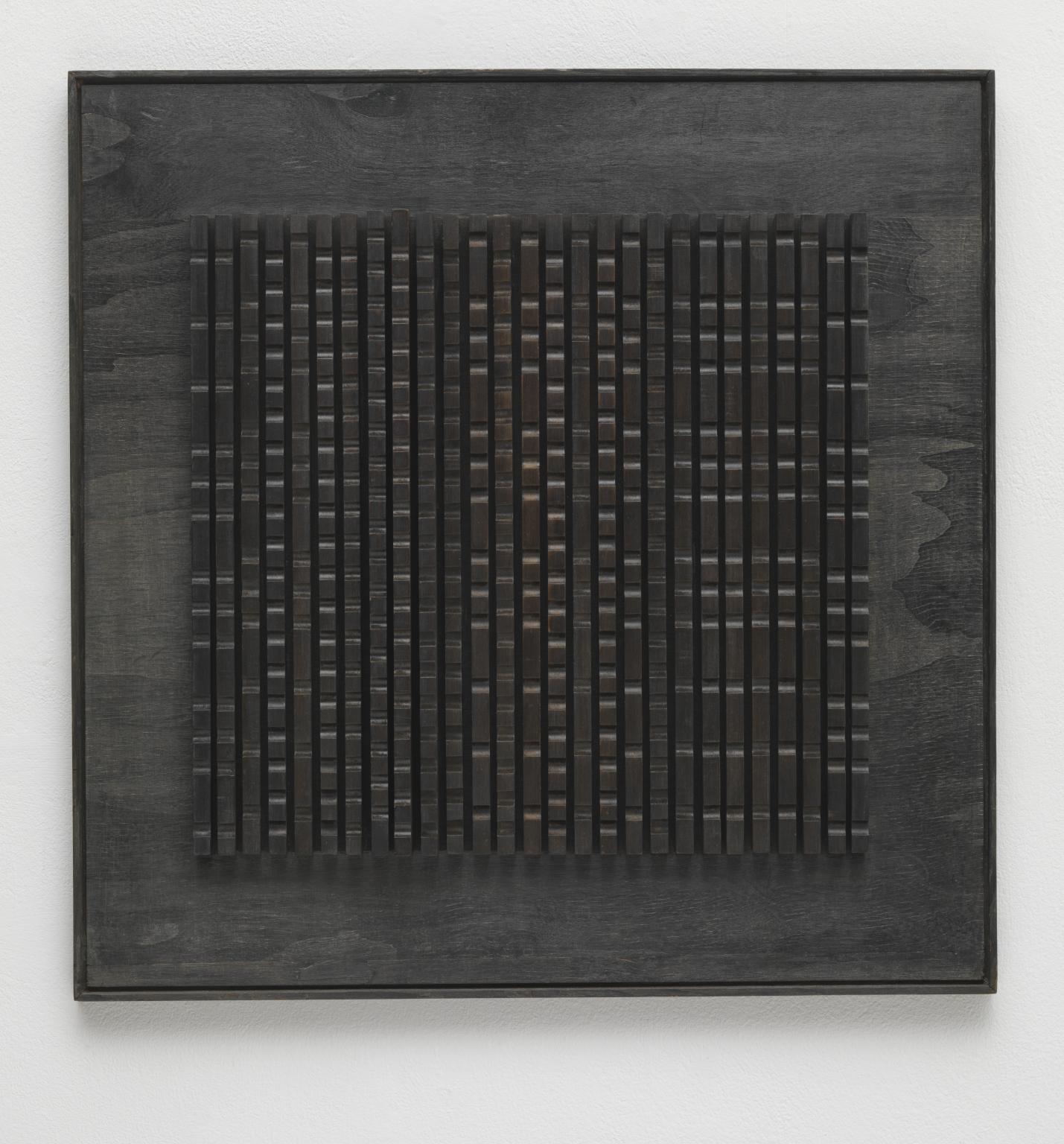
Ivan Picelj, Surface IX 1962
Surface IX 1962 is a square-format wooden relief on a square wooden backboard which has been painted black by the artist. The relief itself is composed of twenty-seven vertical slats of wood of equal height and width, placed adjacent to one another. Each wooden slat has been machine-routed, or turned, creating a pattern of horizontal indentations at varying intervals along the slats. The profile of each moulded strip is undulated, some strips containing as few as thirteen notches, others as many as nineteen. Each profile becomes a different structural element in the constructed relief. Placed side-by-side, the alternating profiles create a sense of rhythm and movement. Surface IX belongs to a body of wooden reliefs that Picelj created between the late 1950s and the early 1960s to which he gave the name ‘surfaces’, differentiating them from each other by using the roman numerical system.
5/30
artworks in Journeys through the Tate Collection
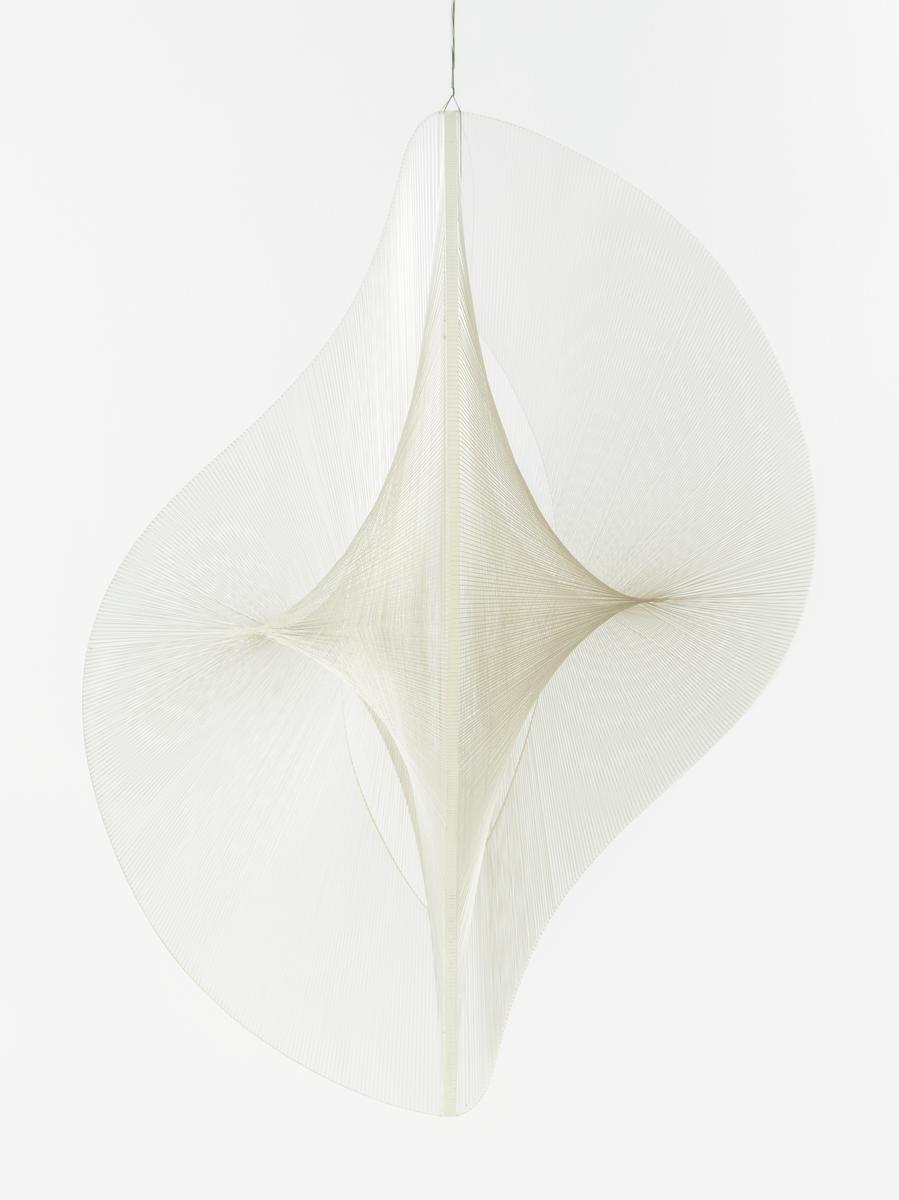
Naum Gabo, Linear Construction No. 2 1970–1
'Linear Construction No.2' exists in over twenty versions, both standing and hanging. The light-catching nylon filament is wound around two intersecting plastic planes. The stringing gives a delicate sense of three dimensions in the complicated patterns created by the irregular lobe shapes of the transparent plastic. It was developed from Gabo's unrealised project for the lobby of the Esso Building in New York in the late 1940s. Two sculptures similar to 'Linear Construction No.2' were designed to be located on top of the two revolving lobby doors, turning slowly. It was one of Gabo's favourite works and was presented to the Tate in memory of the art historian Herbert Read.
Gallery label, August 2004
6/30
artworks in Journeys through the Tate Collection
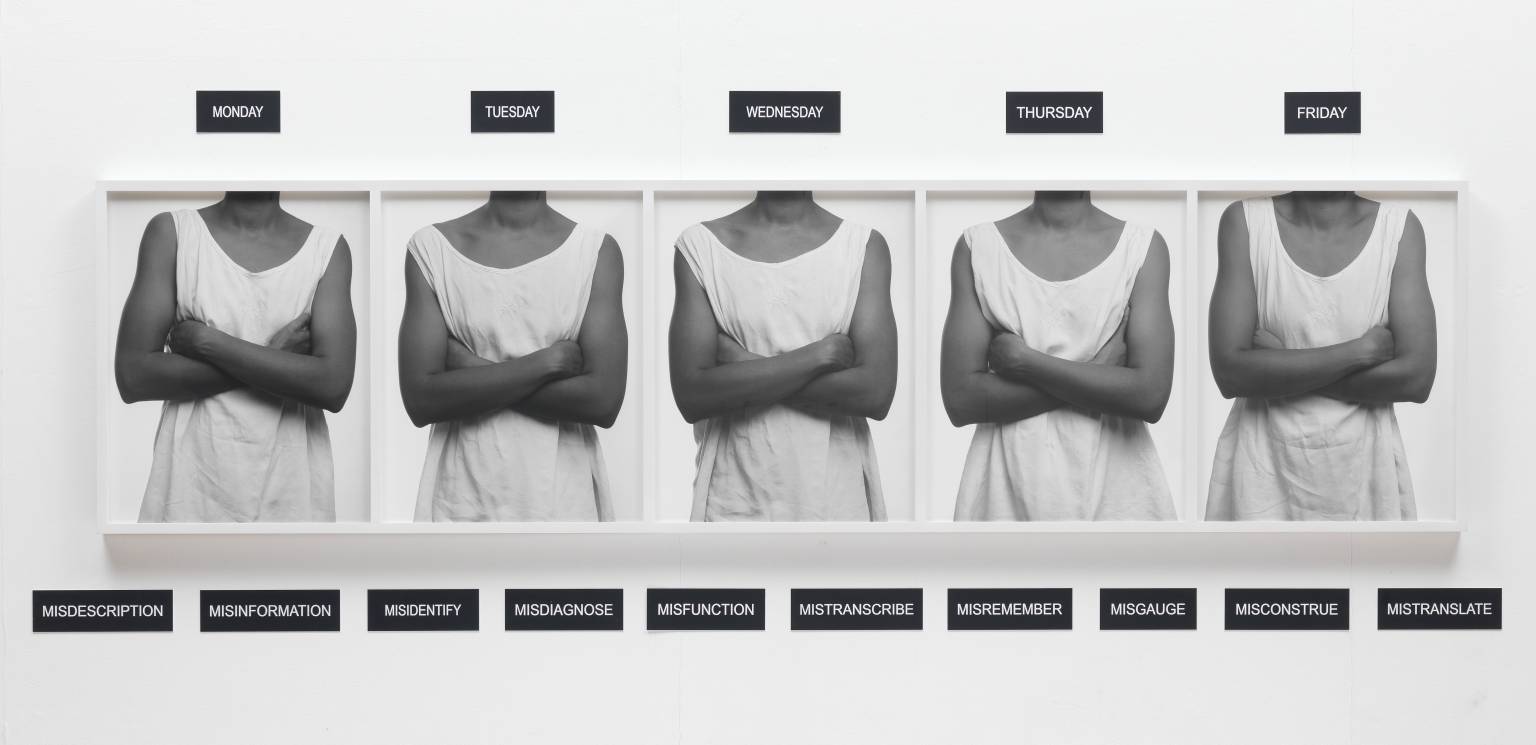
Lorna Simpson, Five Day Forecast 1991
If portraiture is intended to communicate something unique about its subject, Five Day Forecast might be described as an ‘anti-portrait’. The economy of the images, their serial arrangement and the use of black and white recall the conventions of nineteenth-century ethnographic photography, in which the subject becomes a de-individualised representative of a wider group. But in Simpson’s work, rather than being available for scrutiny and categorisation, the figure is photographed cropped so only her torso is visible. In this way, she remains ultimately inaccessible to the viewer.
Gallery label, November 2015
7/30
artworks in Journeys through the Tate Collection
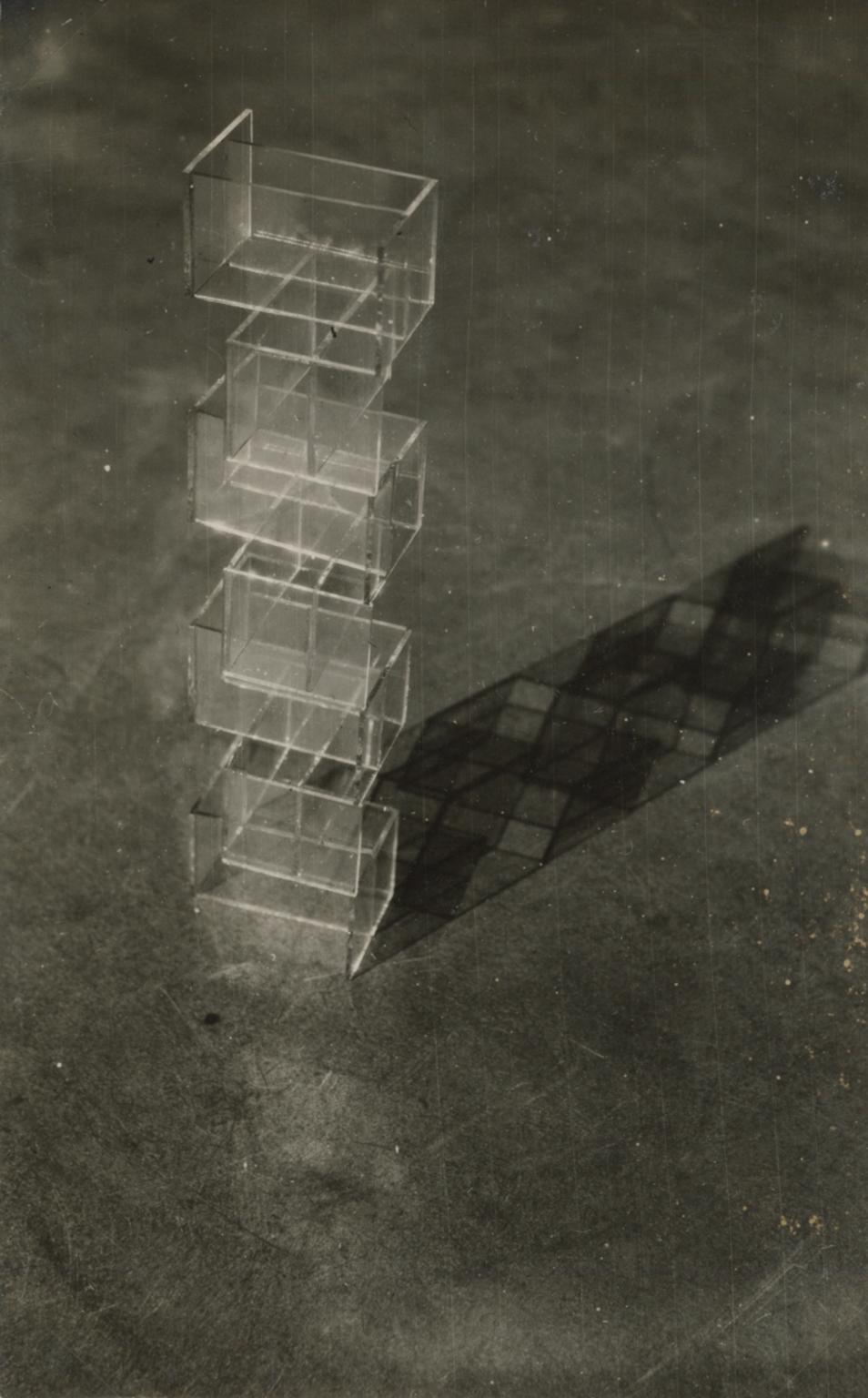
Edmund Collein, Untitled (Material Study, Construction of Glass Plates, Josef Albers’ Preliminary Course, Bauhaus Dessau) c.1927–30
8/30
artworks in Journeys through the Tate Collection
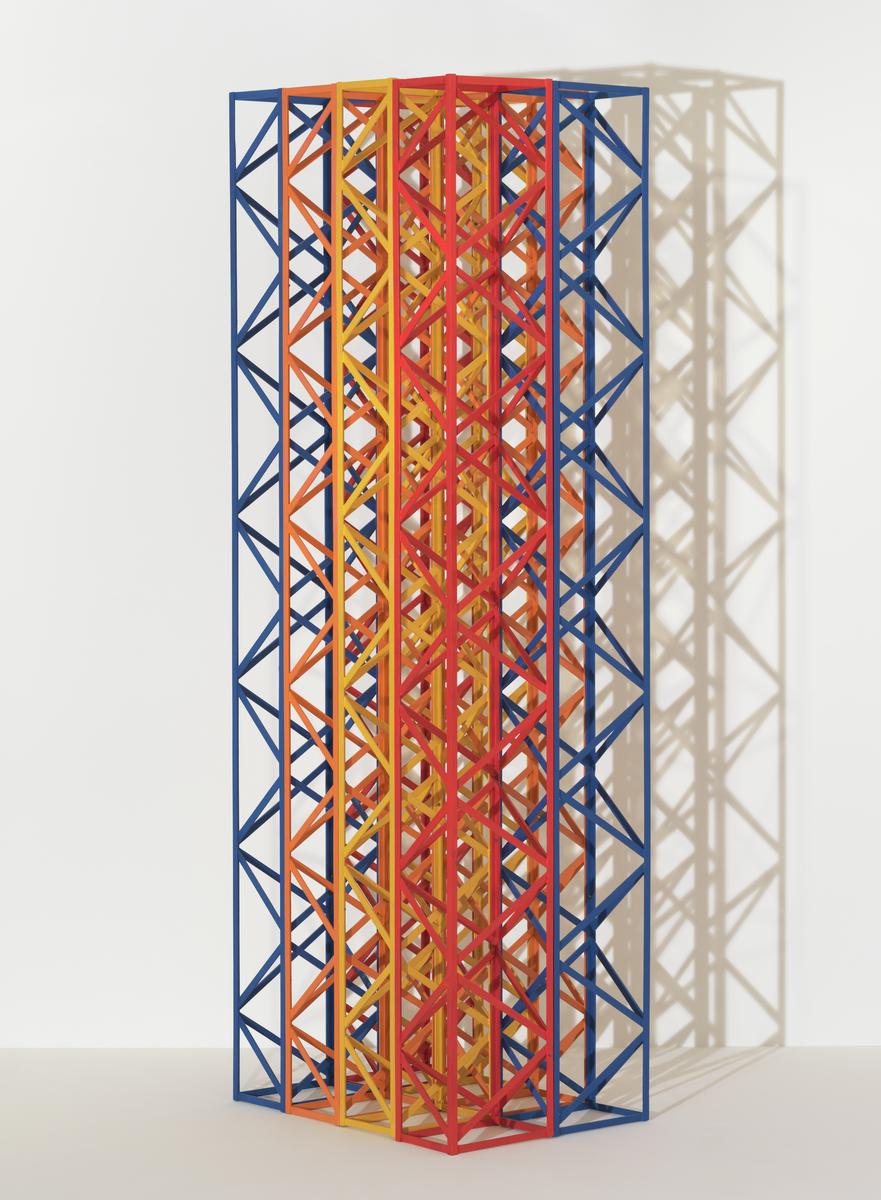
Rasheed Araeen, Rang Baranga 1969
After relocating to London from Karachi, Pakistan, in 1964, Araeen was struck by the work of the British sculptor Anthony Caro and decided to devote himself full-time to sculpture. Rather than following Caro’s example of a compositionally driven practice, Araeen decided that symmetrical configuration should form the basis of a new kind of sculpture. Formally Rang Baranga resembles the structures of Sol Lewitt’s open minimalist sculptures, but unlike the American artist’s, Araeen’s forms incorporate diagonal and orthogonal elements which refer in part to Islamic art but more importantly point to his training and practice as an engineer.
Gallery label, September 2016
9/30
artworks in Journeys through the Tate Collection
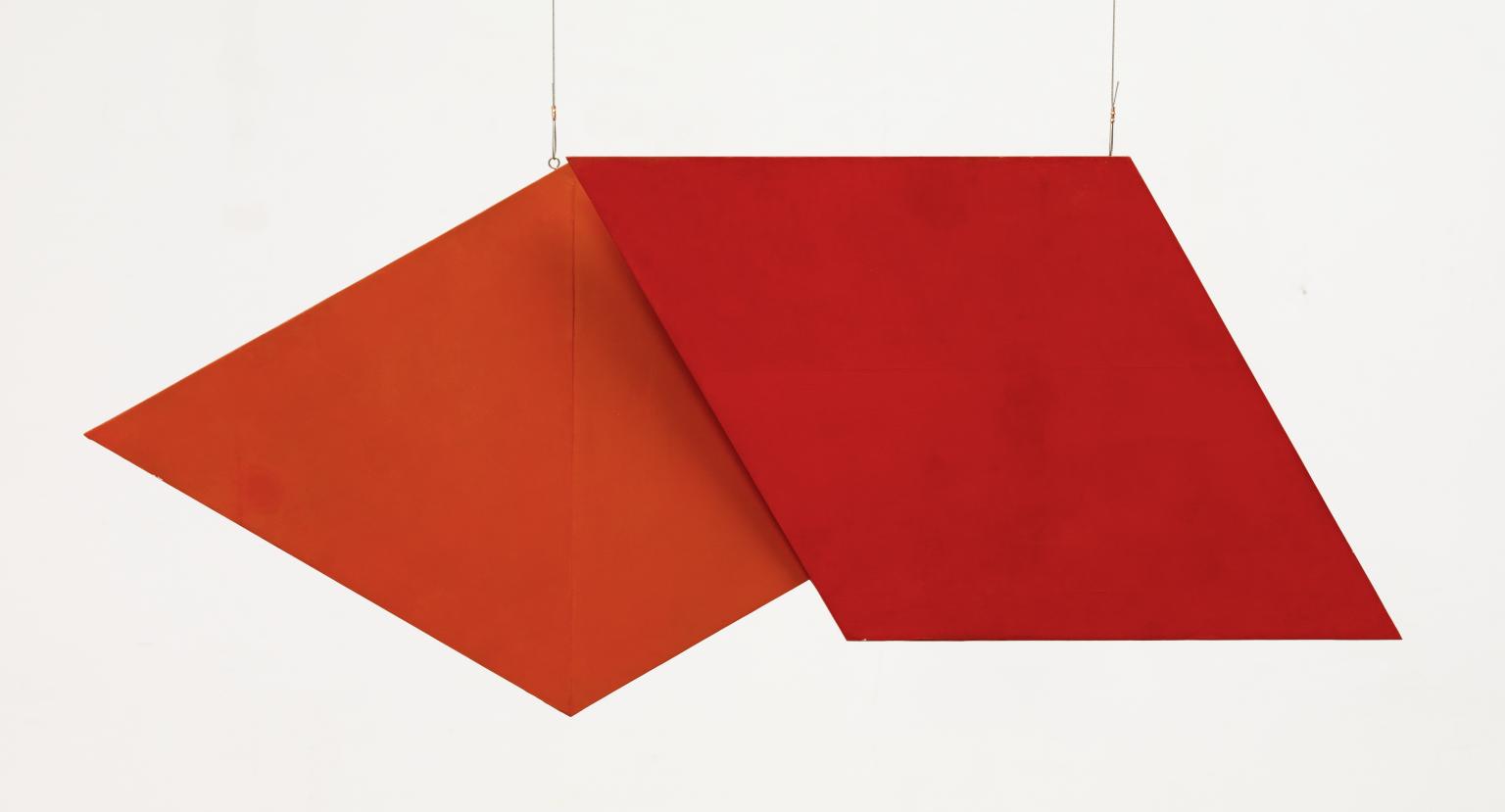
Hélio Oiticica, Spatial Relief (red) REL 036 1959
Oiticica suspended this work from the ceiling so that viewers would have to walk around it. He wanted us to become active participants in the work. Only by walking around it can you see the difference in colour and shapes on both sides. It is painted in two very similar colours, chosen for their reaction to light. Oiticica was influenced by the ordered abstraction of artists such as Piet Mondrian and Kazimir Malevich, whose work is also on display in this room. But Oiticica introduced elements of movement and change, emphasising the bodily experience of his work.
Gallery label, August 2019
10/30
artworks in Journeys through the Tate Collection
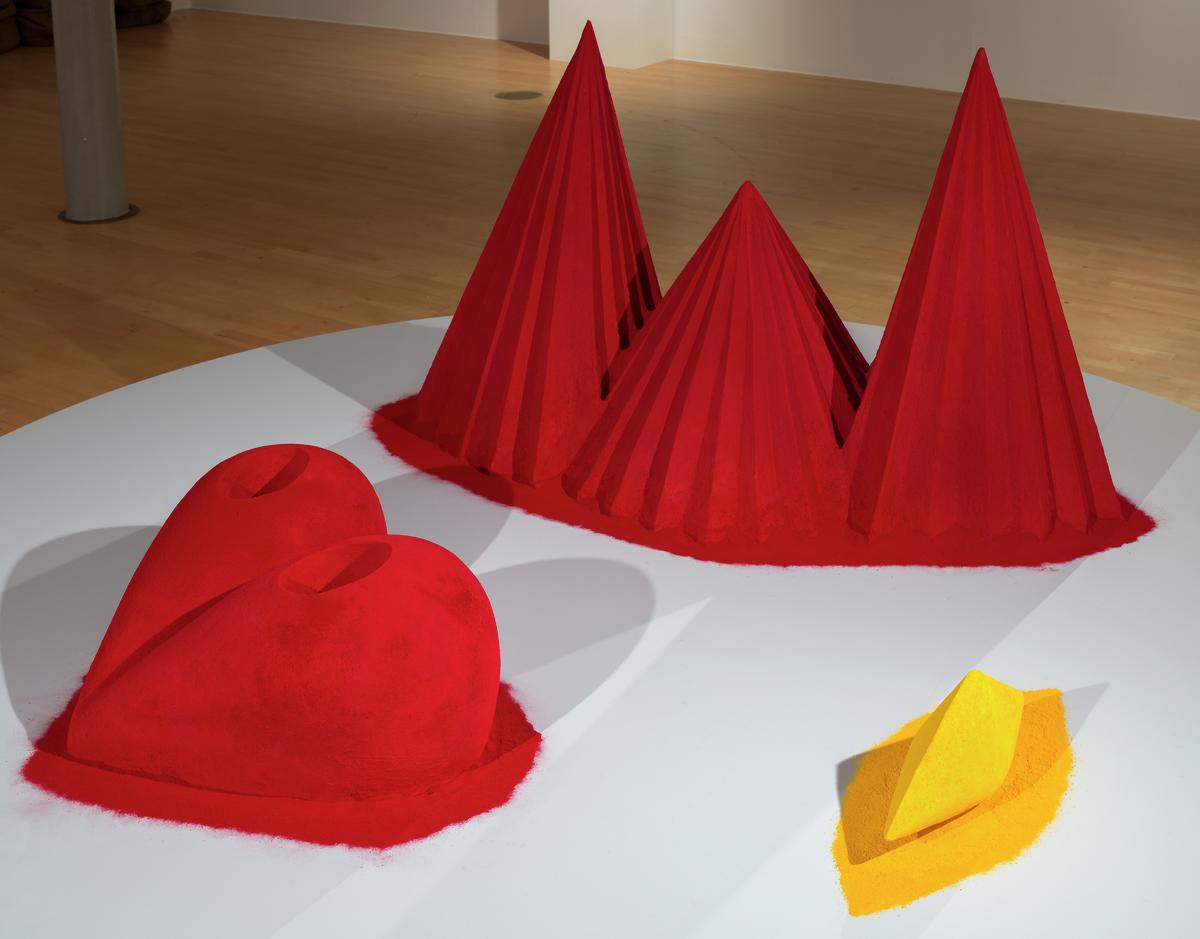
Sir Anish Kapoor CBE RA, As if to Celebrate, I Discovered a Mountain Blooming with Red Flowers 1981
11/30
artworks in Journeys through the Tate Collection
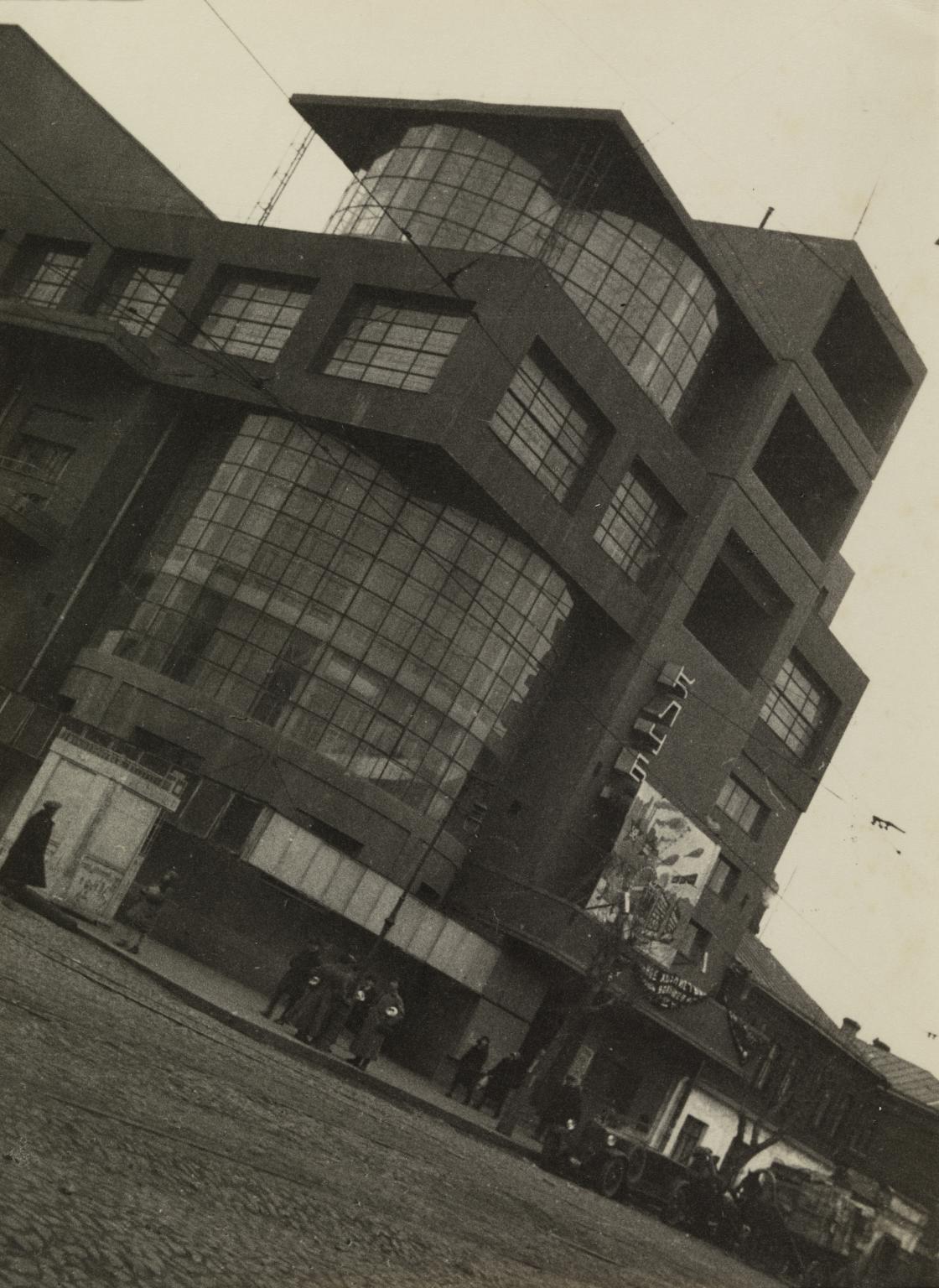
Iwao Yamawaki, Zuyev Workers’ Club Moscow 1931
Born in Fujita, Nagasaki, Iwao Yamawaki studied architecture at the Tokyo School of Arts and after graduating worked as an architect in a construction company. During this time, he took pictures with his 35mm camera to support and document his architectural studies. In 1931 he travelled to Germany to study at the Bauhaus in Dessau and became heavily influenced by László Moholy-Nagy’s idea that photography could open up new ways of seeing the world beyond those available to the human eye. Yamawaki travelled widely in Europe and the Soviet Union, documenting modernist architecture and design, as well as capturing student life at the Bauhaus.
Gallery label, November 2015
12/30
artworks in Journeys through the Tate Collection
Sorry, no image available
Cameron Rowland, Assessment 2018
13/30
artworks in Journeys through the Tate Collection
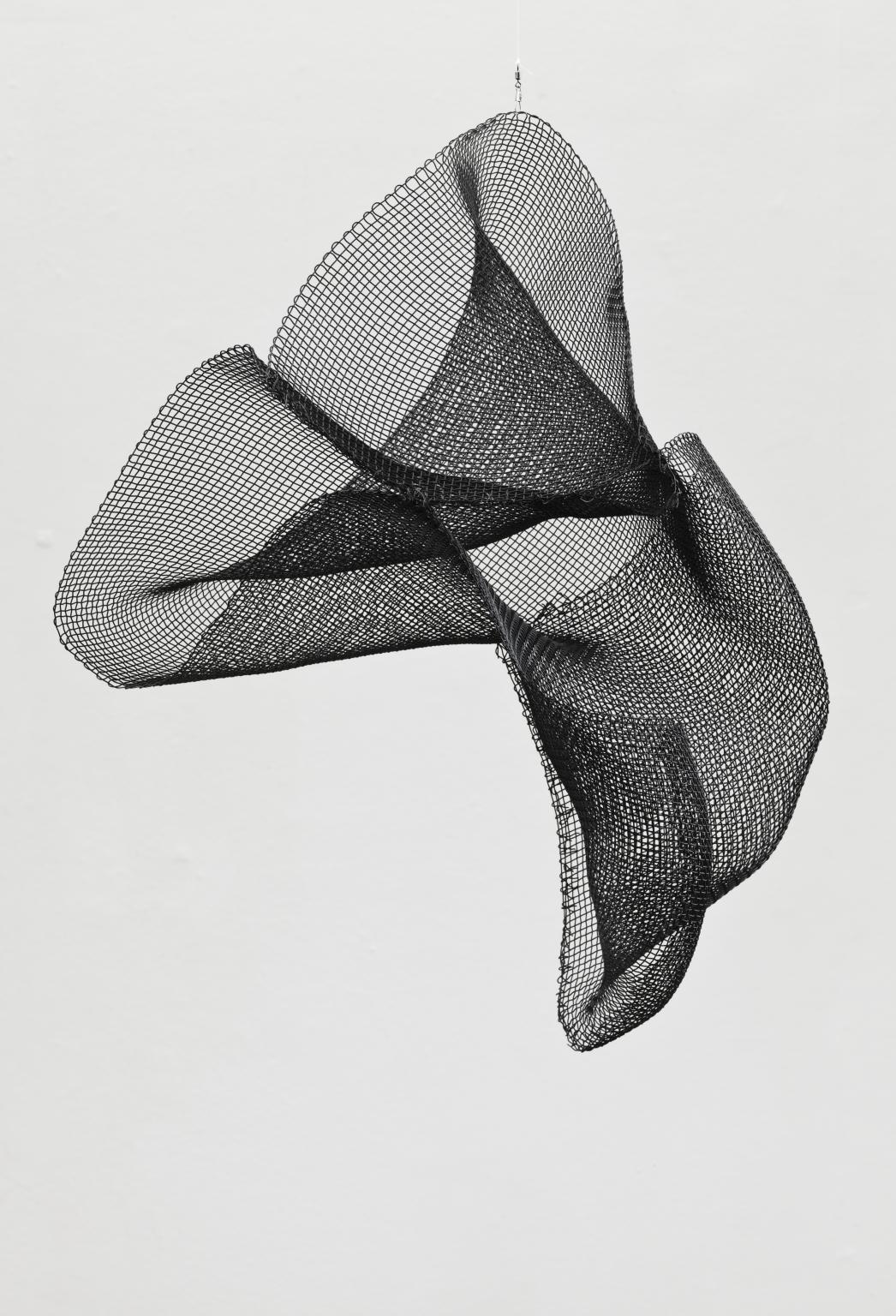
Katsuhiro Yamaguchi, Mesh sculpture 1961
14/30
artworks in Journeys through the Tate Collection
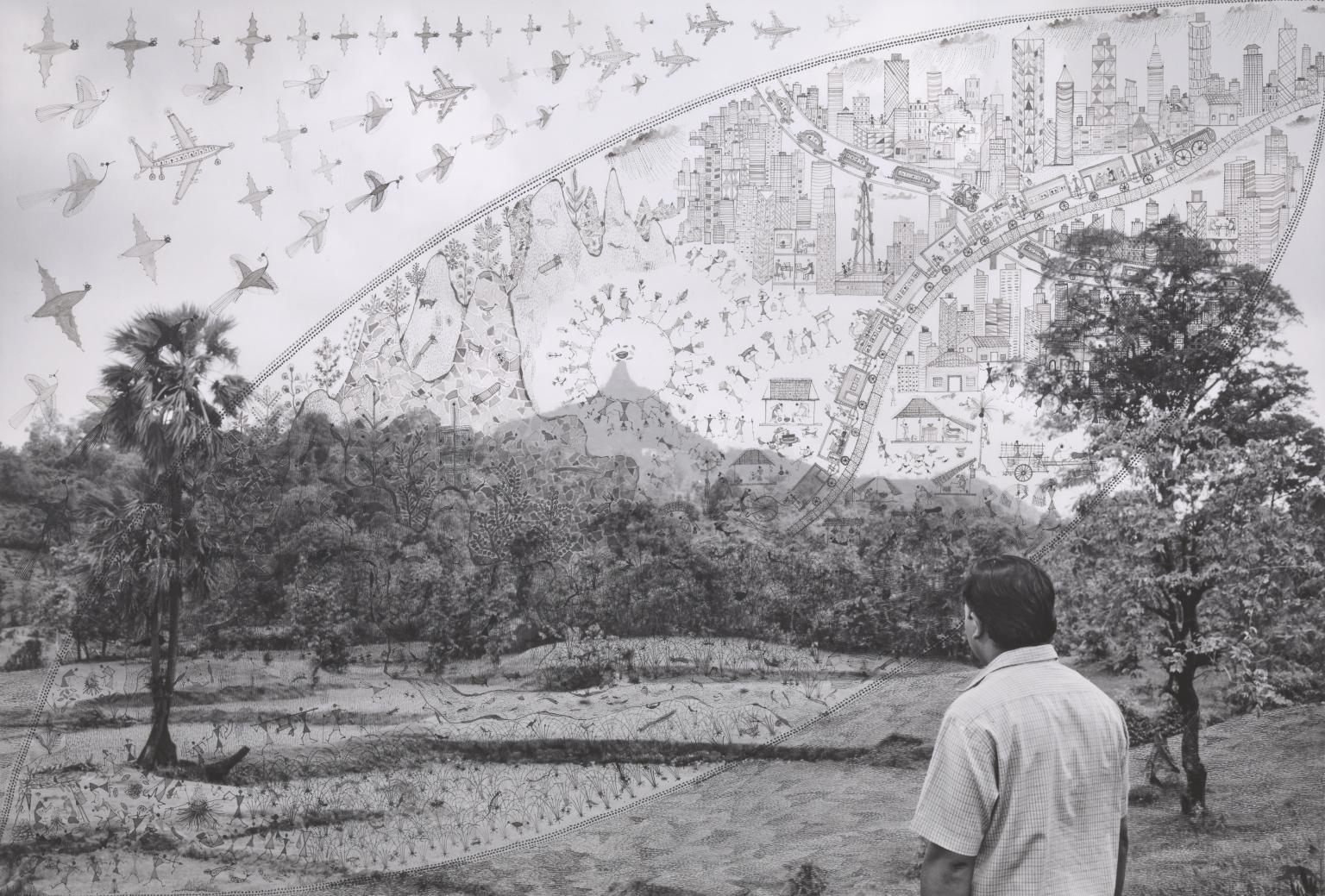
Gauri Gill, Rajesh Vangad, The Eye in the Sky 2014–16
These photographs show evidence of sea pollution in a small mangrove forest in Port Dickson, Malaysia, Gill’s hometown. Colourful plastic bags and other rubbish have washed up with the tides, getting stuck in branches and roots. In the black and white photographs, it can be hard to distinguish the waste among the plants. The first photo shows large cargo ships in the distance. This suggests the activities of Port Dickson’s commercial harbour are the source of the detritus. More widely, the series raises questions about the consequences of globalisation on the environment.
Gallery label, June 2021
15/30
artworks in Journeys through the Tate Collection
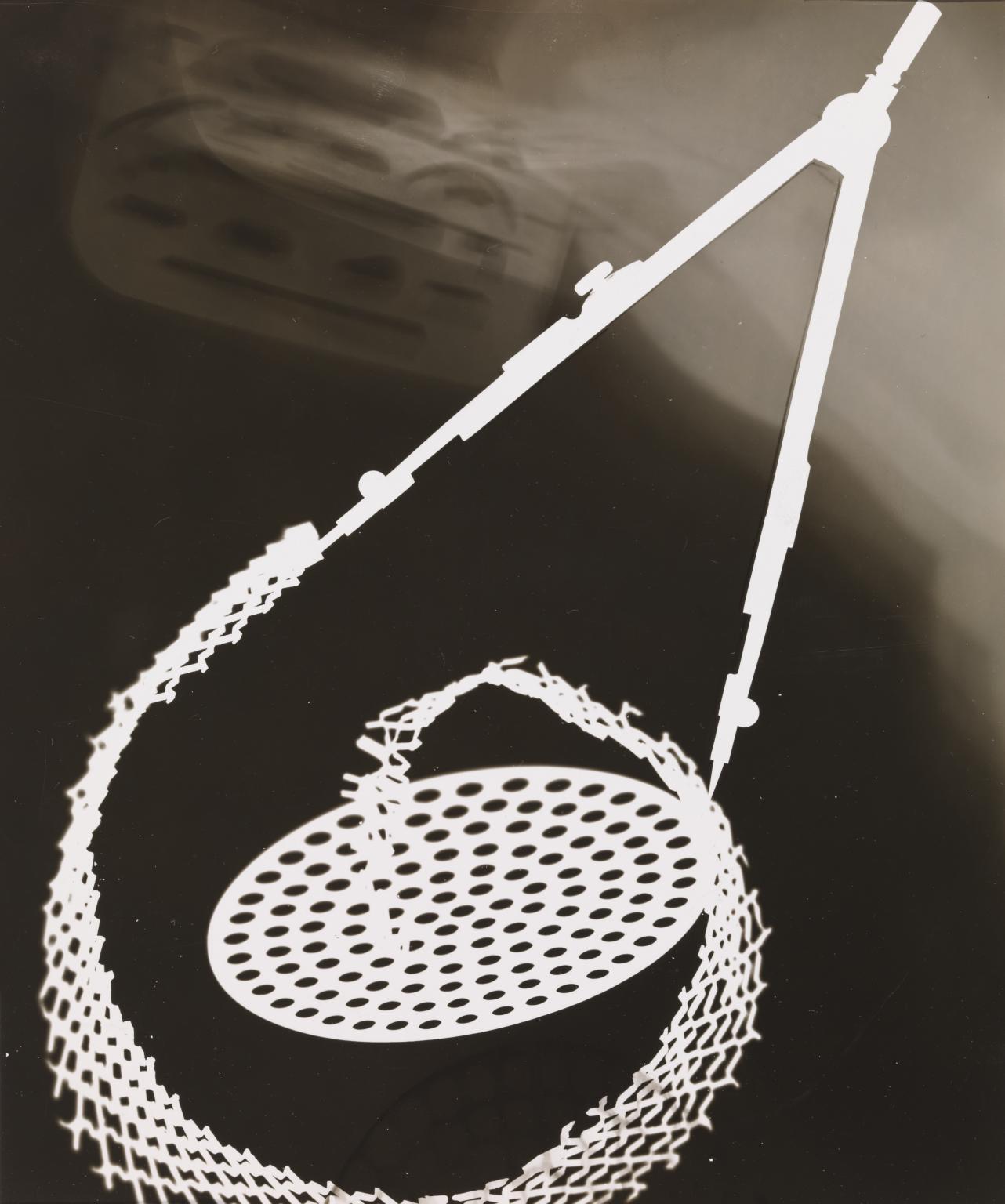
György Kepes, Compass and Strainer Photogram n.d
This is one of a large group of photograms and studies in modernist photography in Tate’s collection by the Hungarian-born photographer, painter, designer, teacher and writer, Gyorgy Kepes (see Tate P80532–P80568, T13973–T13975). They date from 1938 to the early 1940s and were made in the United States, where Kepes had emigrated in 1937. Kepes made his earliest photograms in Budapest, taking nature as his starting point, directly recording the process without a camera onto photosensitized surfaces. In the late 1920s Kepes joined the Berlin studio of the Hungarian artist and modernist photographer László Moholy-Nagy (1895–1946). Moholy-Nagy had been a teacher at the Bauhaus School in Germany and was one of the principals in promoting the values of the Bauhaus movement, as well as a pioneer who experimented with a multitude of materials and techniques. Kepes was introduced to the ‘new vision’ provided by the possibilities of modern art techniques while collaborating alongside Moholy-Nagy. He began to experiment with photograms himself – photographic prints made in the darkroom by placing objects directly onto light sensitive paper and exposing the paper to light. Later, he made prints he called ‘photo-drawings’, in which he applied paint to a glass plate that he then used as though it were a negative. Only a few of Kepes’s works from this earlier period survived the artist’s many moves in the 1930s and the Second World War.
16/30
artworks in Journeys through the Tate Collection
Sorry, no image available
Paulo Nazareth, Cinema Africa 2012–2013
17/30
artworks in Journeys through the Tate Collection
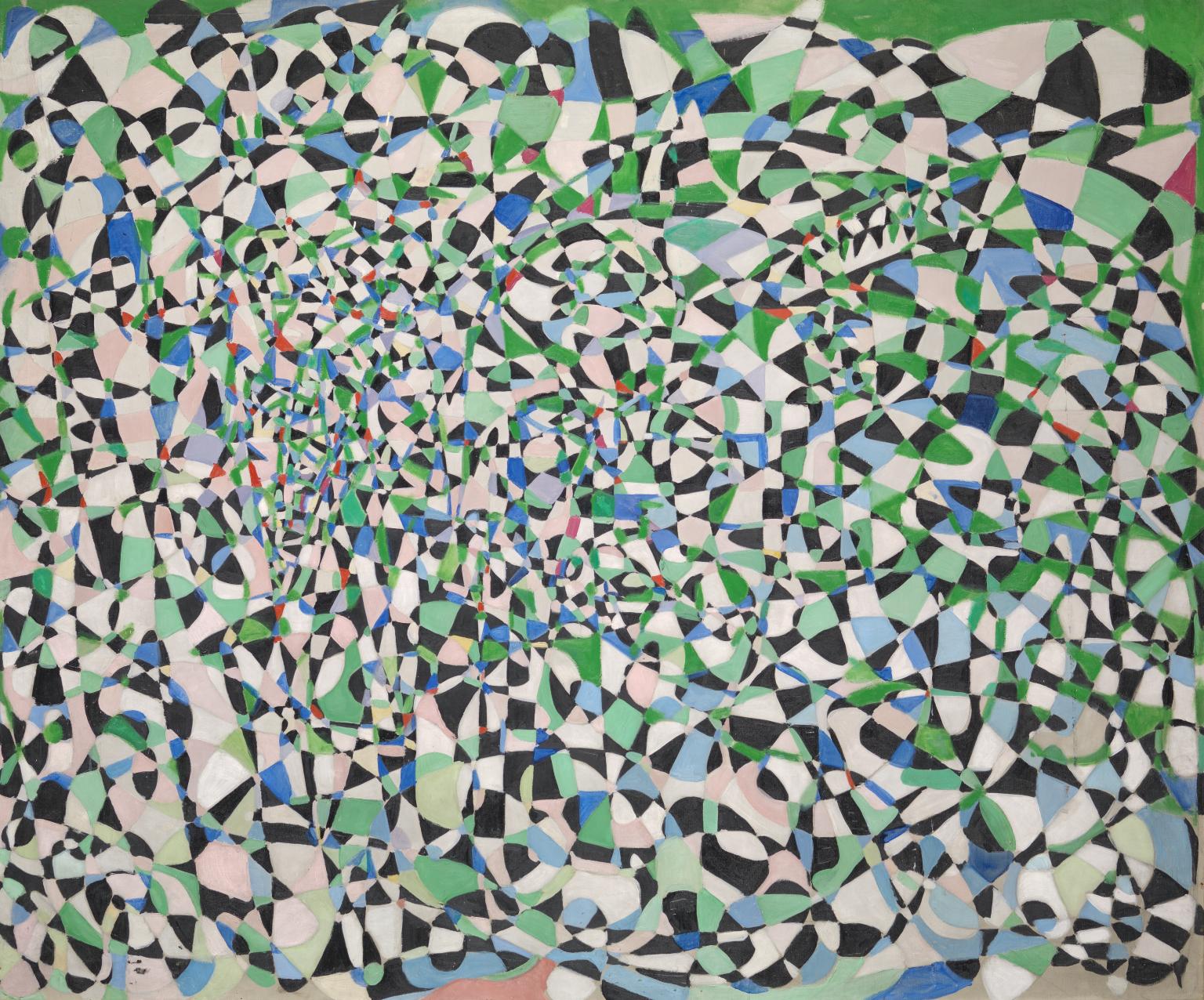
Fahrelnissa Zeid, Untitled c.1950s
Fahrelnissa Zeid used swirling, crossing lines to paint this abstract artwork. After drawing the lines in pencil, she filled in the shapes made between them with black, green, blue and pink. The result is a complex, kaleidoscopic effect. Zeid made the painting when she was living in London in the 1950s. In 1949 she had taken her first transatlantic flight and was captivated by the abstracted perspective of aerial views. She later translated their scale and feeling into the whirling shapes that appear in this painting. A divisionist effect is achieved, whereby individual patches of colour are built up to create an overall composition.
Gallery label, November 2021
18/30
artworks in Journeys through the Tate Collection
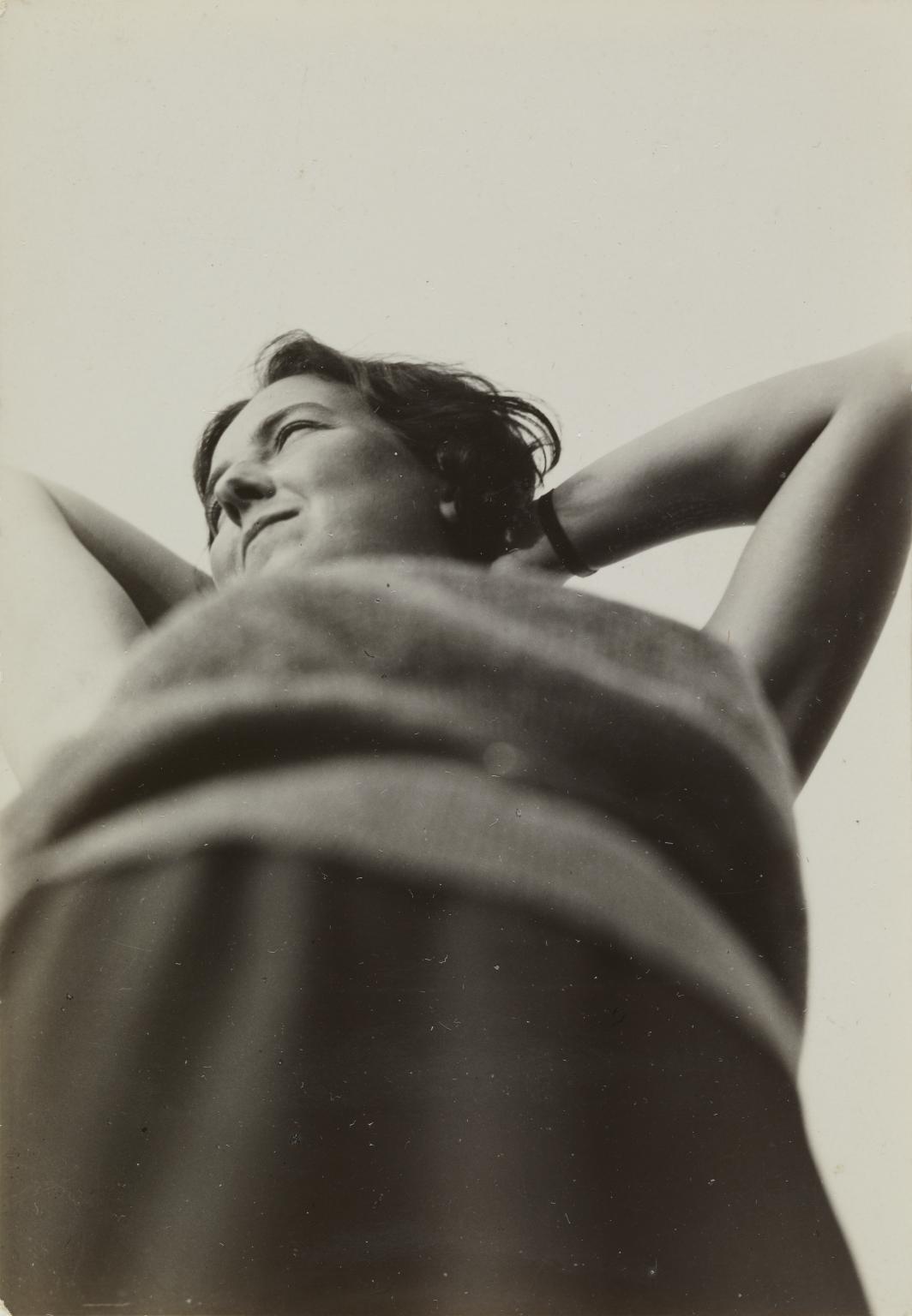
Iwao Yamawaki, Bauhaus Student 1930–2
Born in Fujita, Nagasaki, Iwao Yamawaki studied architecture at the Tokyo School of Arts and after graduating worked as an architect in a construction company. During this time, he took pictures with his 35mm camera to support and document his architectural studies. In 1931 he travelled to Germany to study at the Bauhaus in Dessau and became heavily influenced by László Moholy-Nagy’s idea that photography could open up new ways of seeing the world beyond those available to the human eye. Yamawaki travelled widely in Europe and the Soviet Union, documenting modernist architecture and design, as well as capturing student life at the Bauhaus.
Gallery label, November 2015
19/30
artworks in Journeys through the Tate Collection
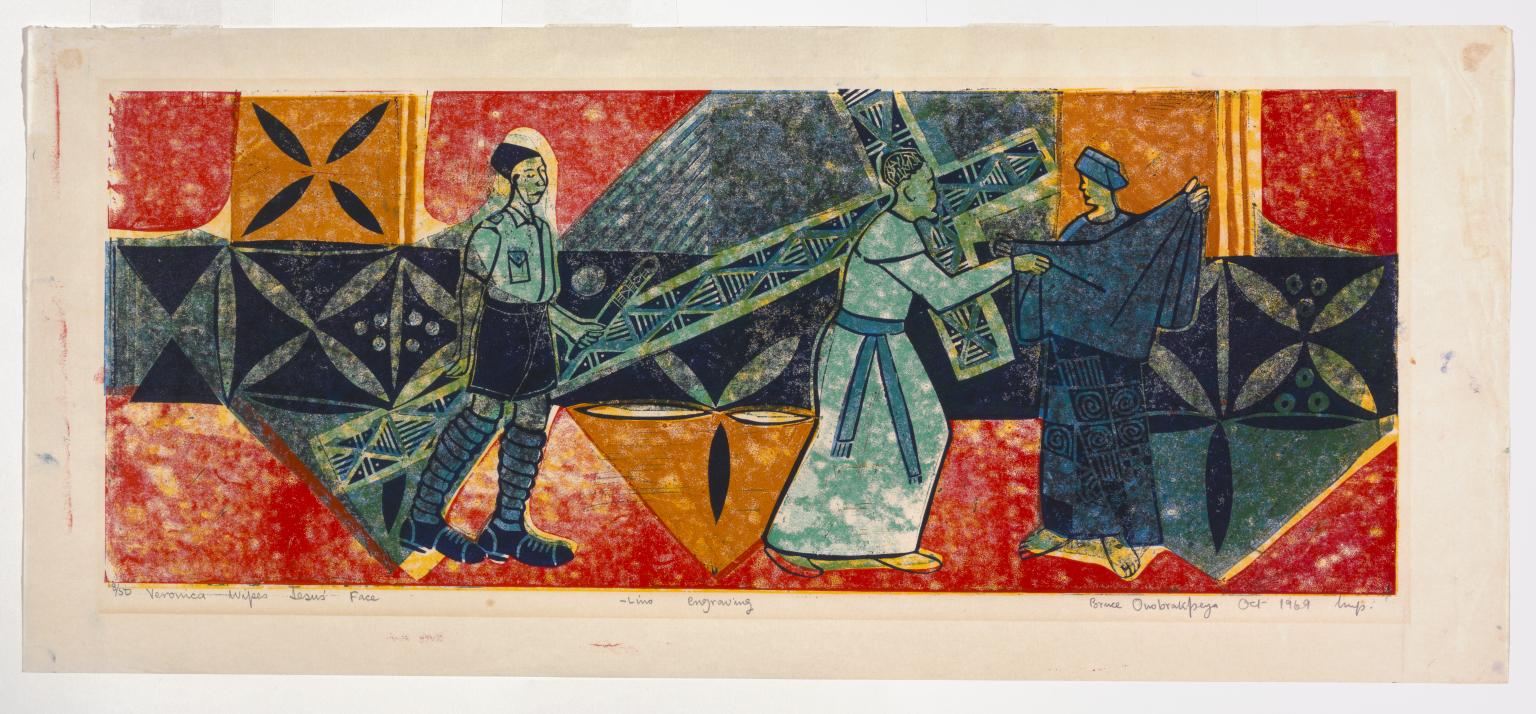
Bruce Onobrakpeya, Veronica wipes Jesus’ face 1969
This is one in a series by Nigerian artist Bruce Onobrakpeya comprising fourteen linocut prints on paper in an elongated landscape format. The subject is a biblical one, with each of the prints depicting a different moment from Jesus’ last days on Earth as a man, beginning with his condemnation by Pontius Pilate and ending with his crucifixion and laying in the tomb. The episodes portrayed – known in Christian theology as The Stations of the Cross – are precisely detailed and dramatised in Onobrakpeya’s prints, but have been placed within an African setting. The apostles wear vividly patterned local Adire prints and those restraining Jesus appear to be wearing colonial-era police uniform. The overall palette of the series is blue and green, with hints of yellow and highlights in orange. Geometric shapes abound, recalling patterns found on traditional Nigerian textiles and architecture. While these forms structure the compositions, they also extend onto the crosses that feature prominently in many of the images. The prints are individually titled as follows: Jesus is Condemned to Death, Jesus Takes his Cross, Jesus Falls the First Time, Jesus Meets his Mother, Simon of Cyrene Helps Jesus, Veronica Wipes Jesus’ Face, Jesus Falls the Second Time, Jesus and the Women of Jerusalem, Jesus Falls the Third Time, Jesus’ Clothes are Torn Off, Jesus is Nailed to the Cross, Jesus Dies on the Cross, Jesus is Taken from the Cross and Jesus is Laid in the Tomb. Thirteen of the prints are number eight in an edition of fifty. Jesus Falls the First Time is number eight in an edition of forty-eight. Complete sets of the prints are rare; although they can be shown individually, they are ideally shown all together as they were in the inaugural exhibition at Tate Modern, London in 2001, Century City: Art and Culture in the Modern Metropolis.
20/30
artworks in Journeys through the Tate Collection
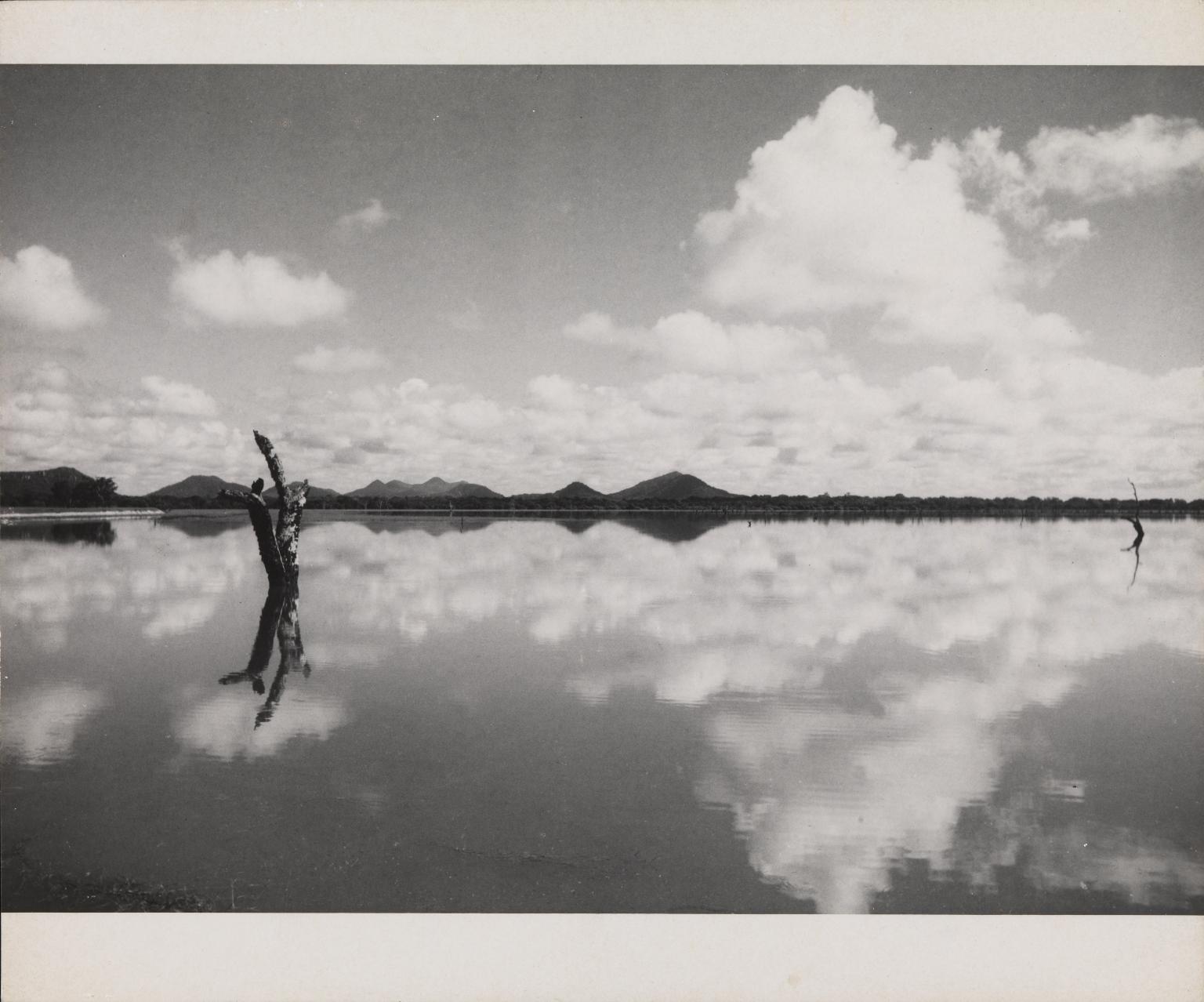
Lionel Wendt, [title not known] c.1933–8
21/30
artworks in Journeys through the Tate Collection
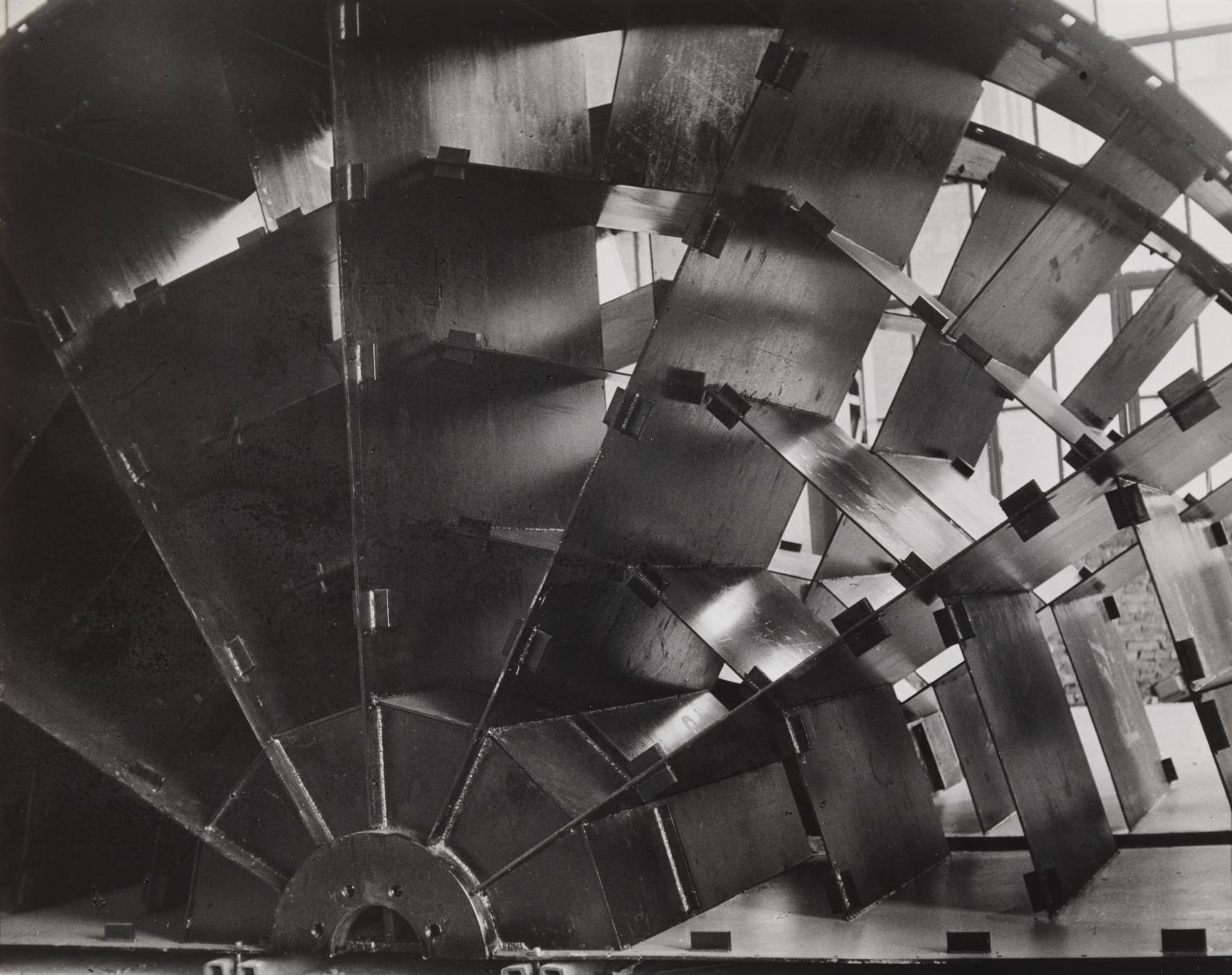
Tadeusz Suminski, Air Heater Rotor, Racibórz Boiler Factory 1962
This is one of nine small black and white silver gelatin photographs in Tate’s collection by the post-war Polish photographer Tadeusz Suminski that were taken in Polish factories. They come from a larger body of work made between 1962 and 1964 for an assignment on new industrial complexes in Poland; Suminski later selected certain images such as these to develop and print privately for inclusion in exhibitions and competitions. The photographs feature closely cropped details of machines and mass-produced industrial products arranged in careful compositions that verge on abstraction. By focusing on serial patterns and contrasts of light and shade, they draw attention to the potential for beauty inherent in the machine-made, industrial environment. The works are titled descriptively according to the factory in which they were taken and the material or machine they depict. Tate’s prints are vintage prints, acquired from the artist’s estate.
22/30
artworks in Journeys through the Tate Collection
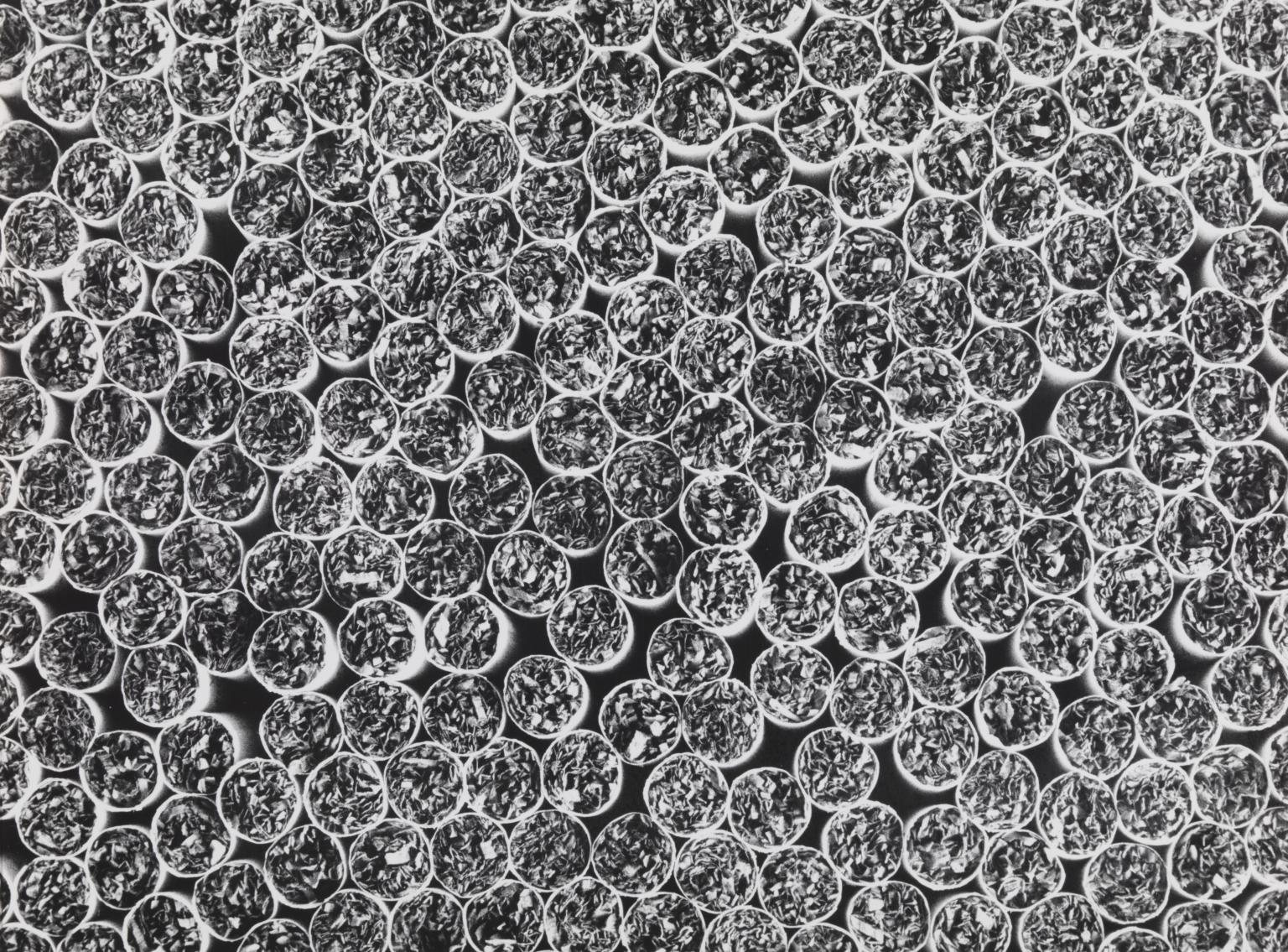
Tadeusz Suminski, Cigarettes, Czyzyny 1962
This is one of nine small black and white silver gelatin photographs in Tate’s collection by the post-war Polish photographer Tadeusz Suminski that were taken in Polish factories. They come from a larger body of work made between 1962 and 1964 for an assignment on new industrial complexes in Poland; Suminski later selected certain images such as these to develop and print privately for inclusion in exhibitions and competitions. The photographs feature closely cropped details of machines and mass-produced industrial products arranged in careful compositions that verge on abstraction. By focusing on serial patterns and contrasts of light and shade, they draw attention to the potential for beauty inherent in the machine-made, industrial environment. The works are titled descriptively according to the factory in which they were taken and the material or machine they depict. Tate’s prints are vintage prints, acquired from the artist’s estate.
23/30
artworks in Journeys through the Tate Collection
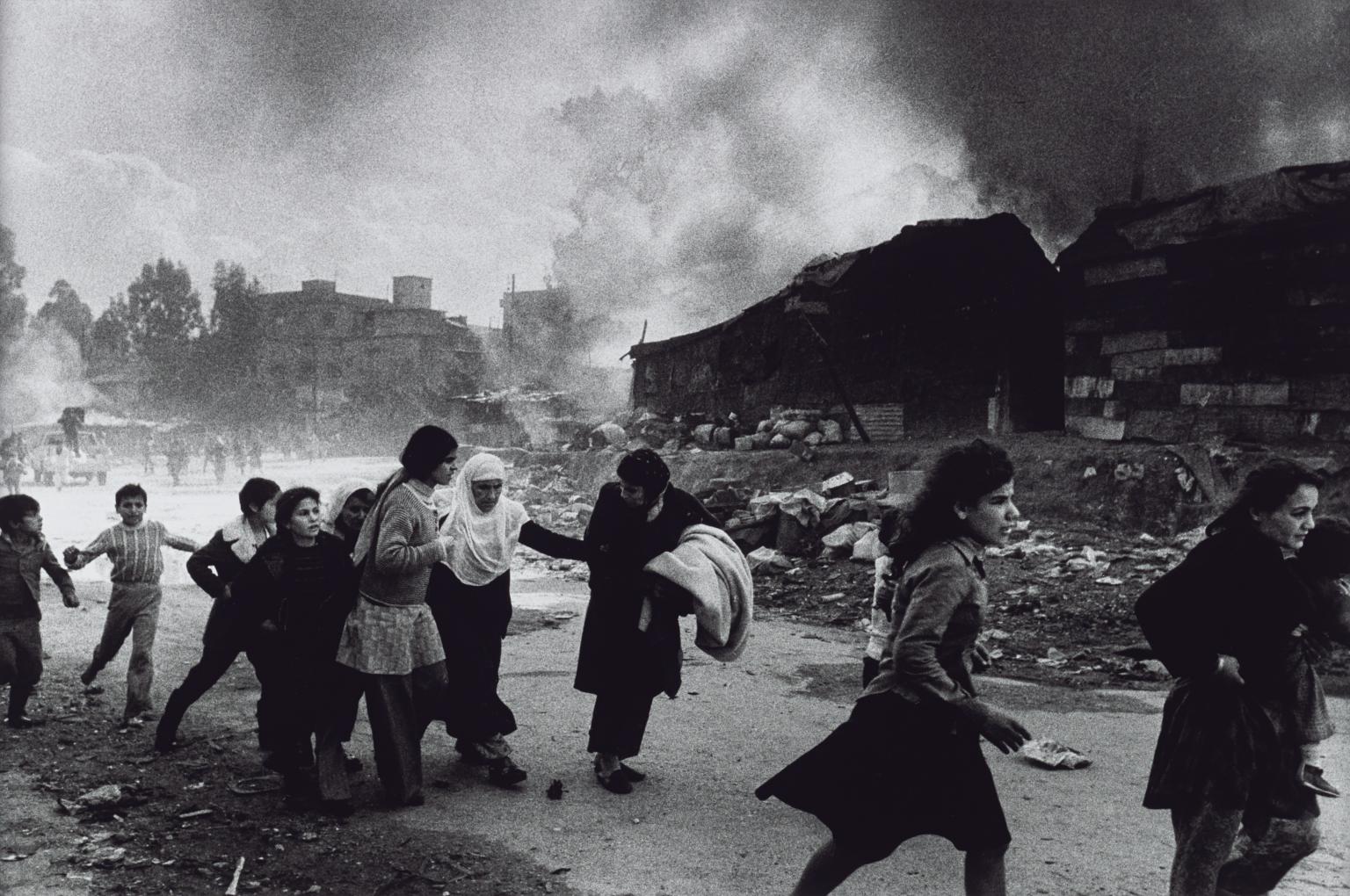
Sir Don McCullin CBE, Palestinian Refugees Fleeing East Beirut Massacre 1976, printed 2013
24/30
artworks in Journeys through the Tate Collection
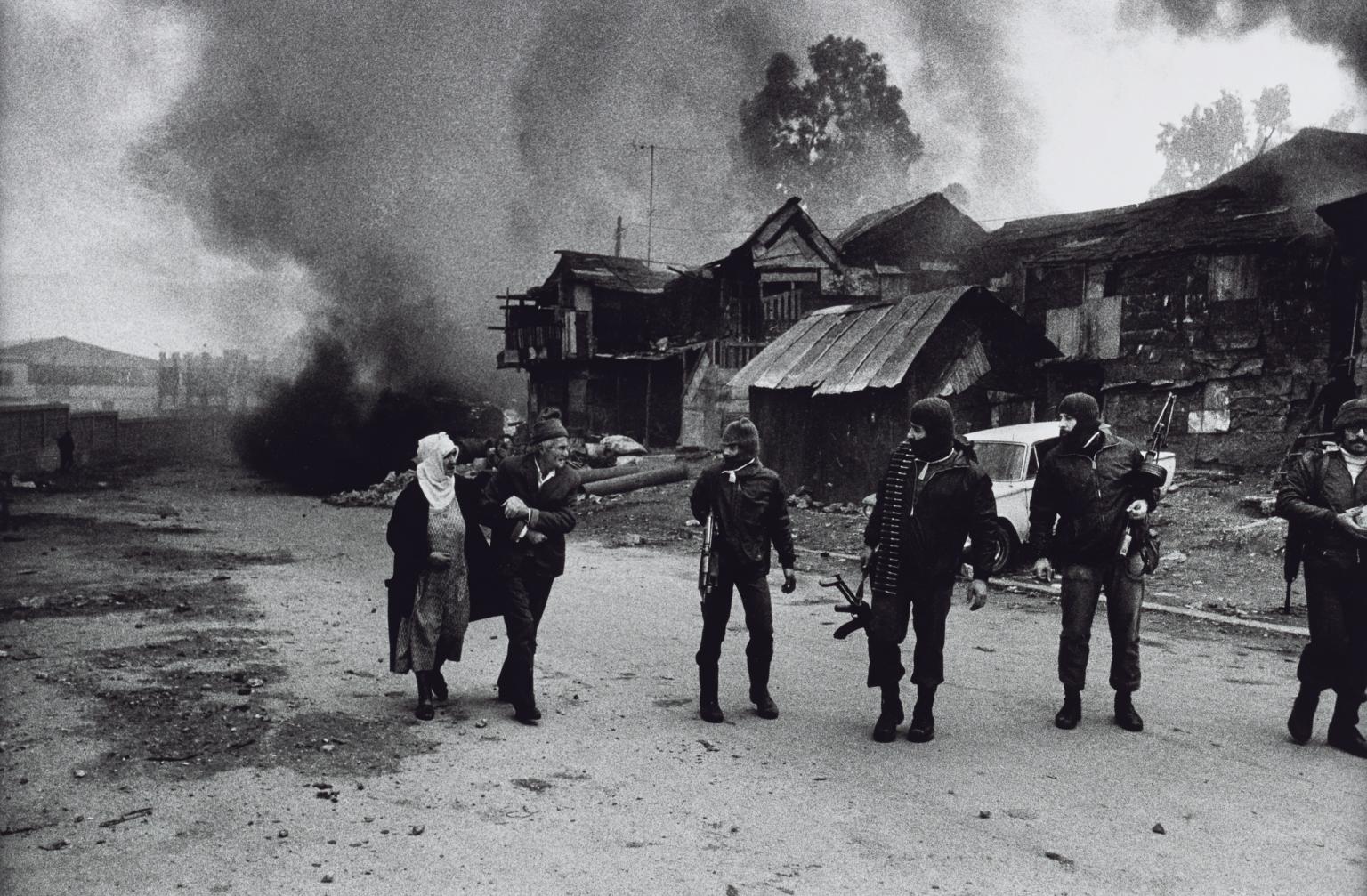
Sir Don McCullin CBE, An Old Palestinian Couple Allowed to Leave the Massacre, Karantina, East Beirut 1976, printed 2013
25/30
artworks in Journeys through the Tate Collection
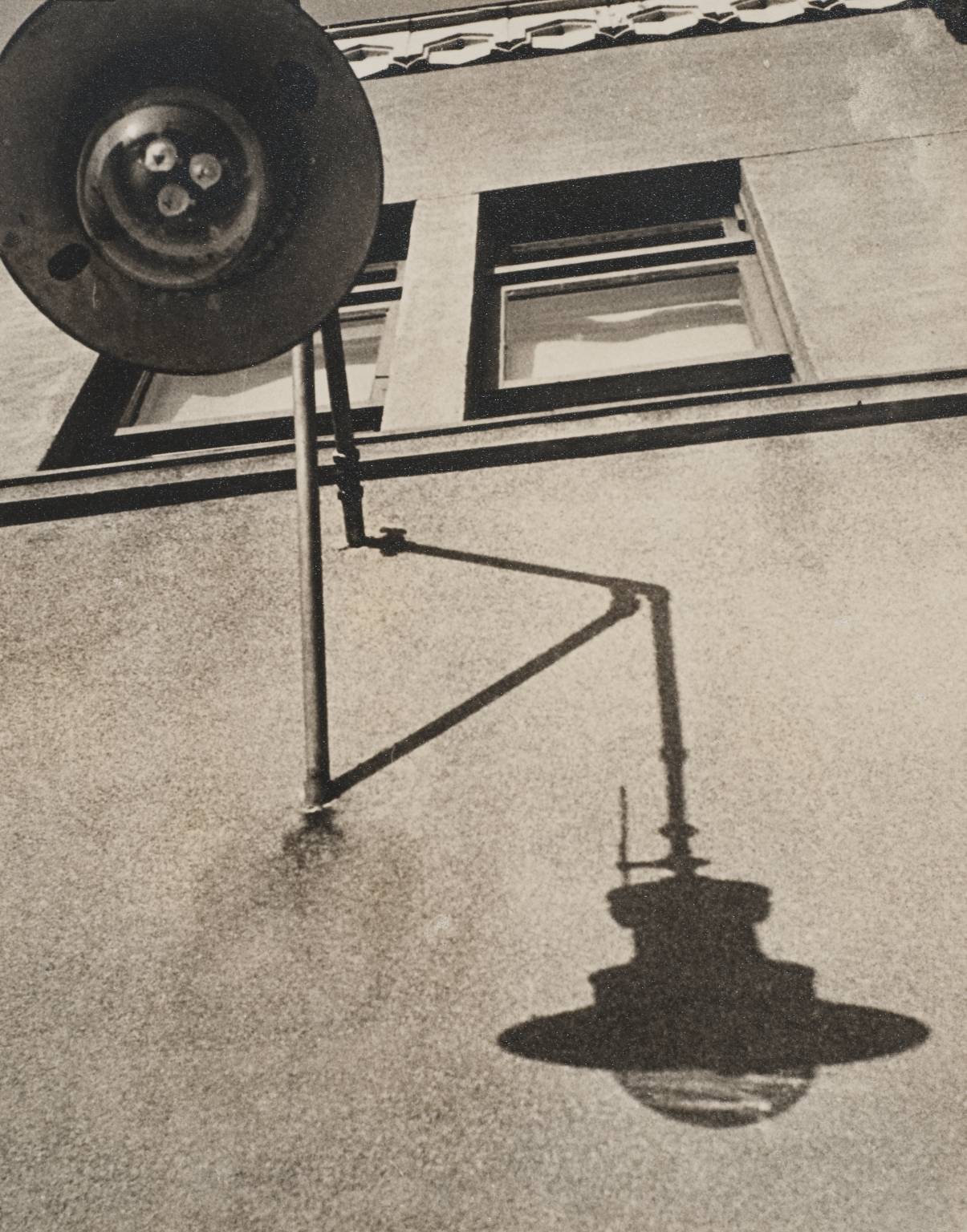
Shikanosuke Yagaki, Untitled (Street lamp and shadow) 1930–9
Shikanosuke Yagaki was an active member of many of the amateur photography clubs flourishing in Japan in the 1930s, including the Sanwa Bank Photo Club, the Karashishi-kai Photo Group, and the Kyoto Leica Club and his work was widely exhibited. Despite a lack of professional training, Yagaki developed a sophisticated style which combined the influence of European modernism with typical Japanese subjects. His work shows a great understanding of the camera’s potential, playing with movement, perspective, light and shadow.
Gallery label, February 2016
26/30
artworks in Journeys through the Tate Collection
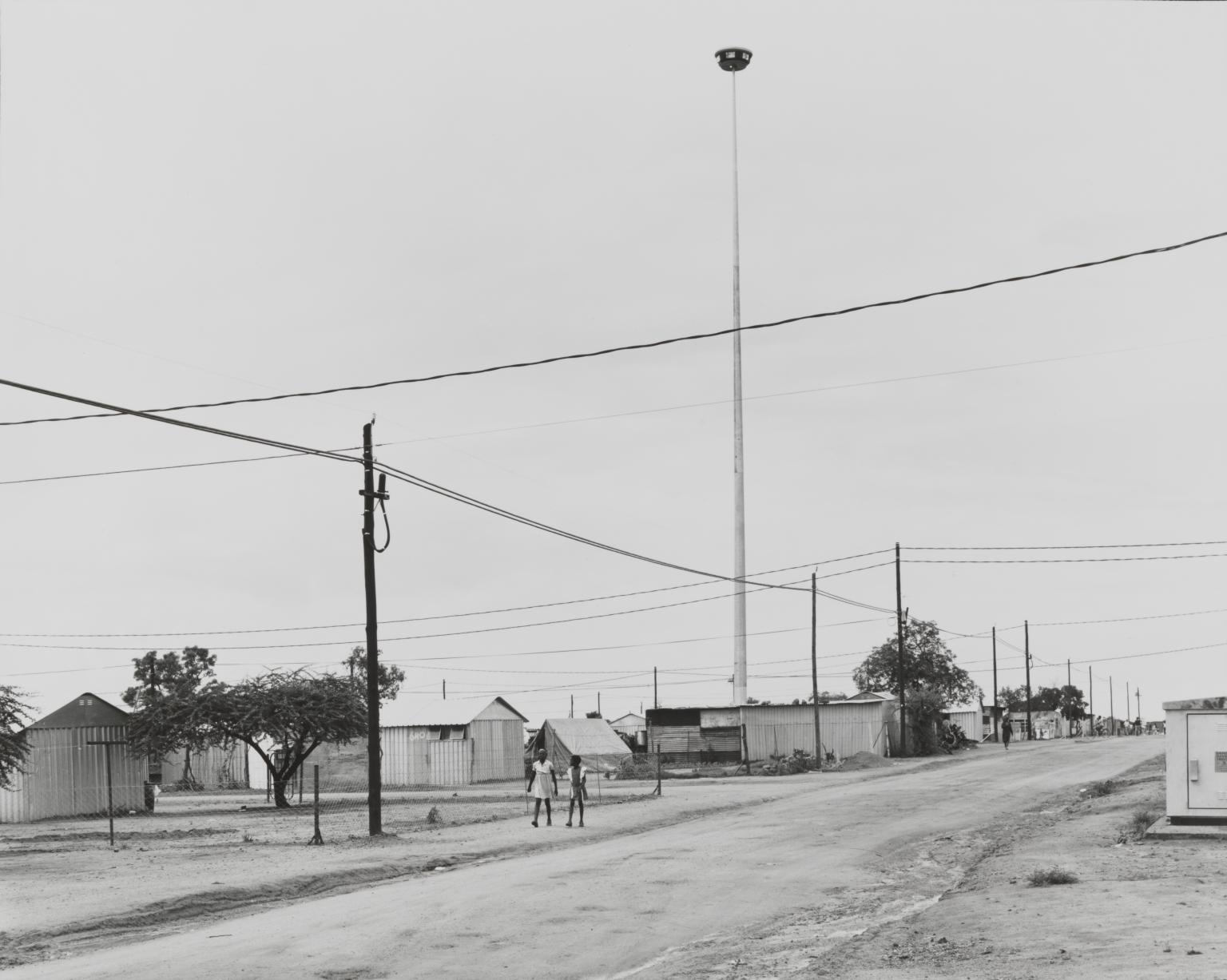
David Goldblatt, The place to which the government wanted the people of Oukasie to move. Letlhabile Removal Camp, Transvaal. 30 November 1986 1986
27/30
artworks in Journeys through the Tate Collection
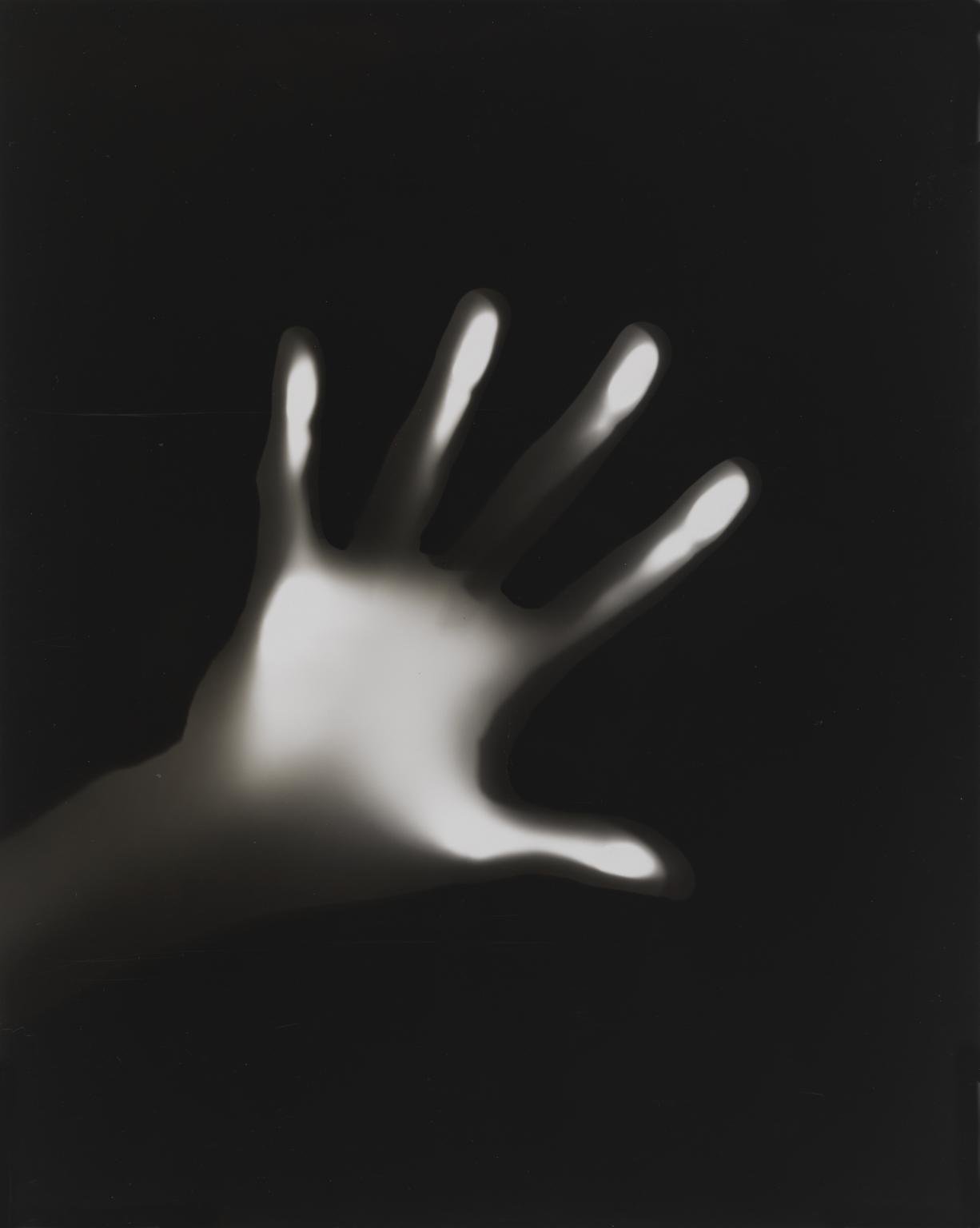
György Kepes, Hand on Black Ground c.1939–40
This is one of a large group of photograms and studies in modernist photography in Tate’s collection by the Hungarian-born photographer, painter, designer, teacher and writer, Gyorgy Kepes (see Tate P80532–P80568, T13973–T13975). They date from 1938 to the early 1940s and were made in the United States, where Kepes had emigrated in 1937. Kepes made his earliest photograms in Budapest, taking nature as his starting point, directly recording the process without a camera onto photosensitized surfaces. In the late 1920s Kepes joined the Berlin studio of the Hungarian artist and modernist photographer László Moholy-Nagy (1895–1946). Moholy-Nagy had been a teacher at the Bauhaus School in Germany and was one of the principals in promoting the values of the Bauhaus movement, as well as a pioneer who experimented with a multitude of materials and techniques. Kepes was introduced to the ‘new vision’ provided by the possibilities of modern art techniques while collaborating alongside Moholy-Nagy. He began to experiment with photograms himself – photographic prints made in the darkroom by placing objects directly onto light sensitive paper and exposing the paper to light. Later, he made prints he called ‘photo-drawings’, in which he applied paint to a glass plate that he then used as though it were a negative. Only a few of Kepes’s works from this earlier period survived the artist’s many moves in the 1930s and the Second World War.
28/30
artworks in Journeys through the Tate Collection
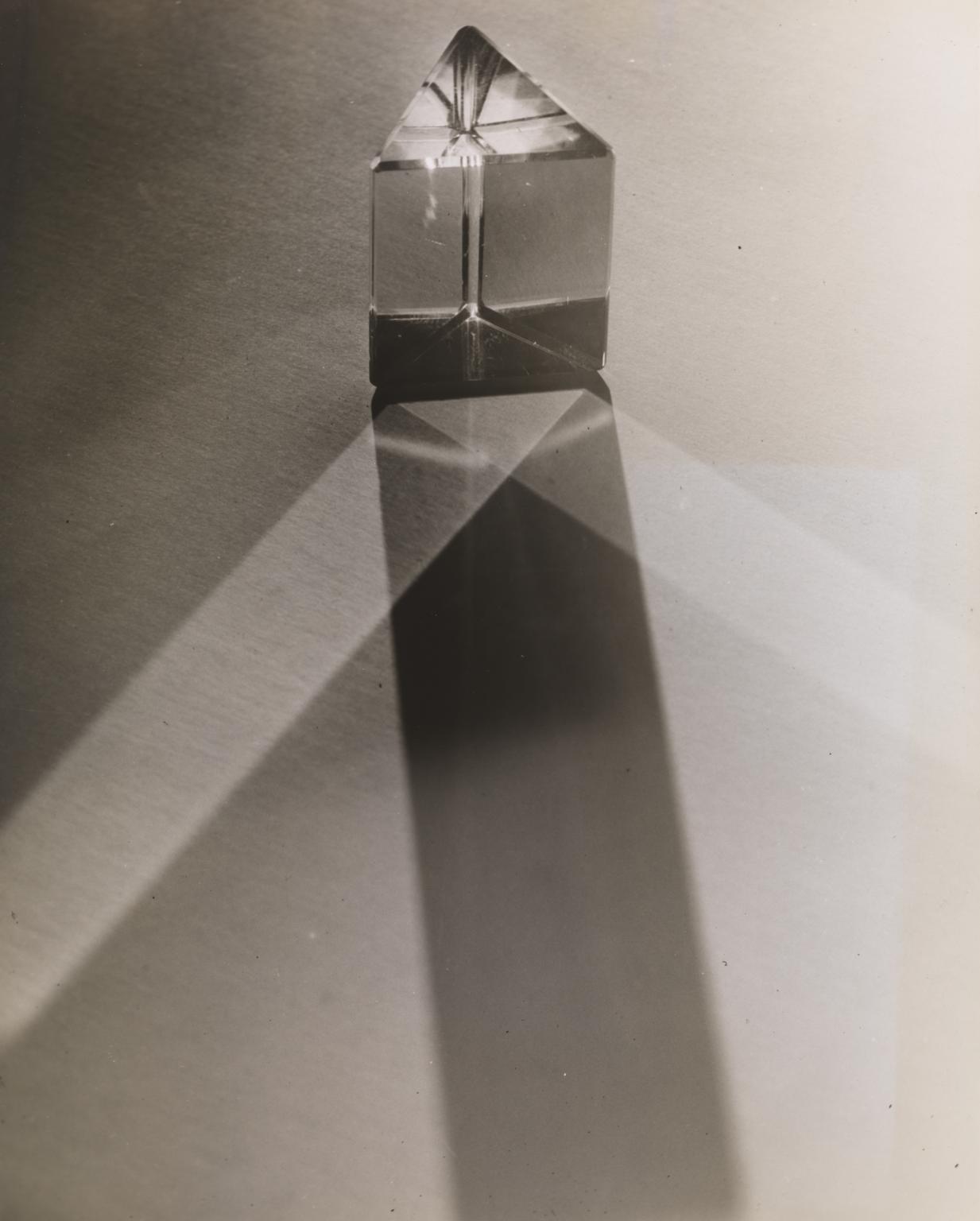
György Kepes, Untitled c.1939–40
This is one of a large group of photograms and studies in modernist photography in Tate’s collection by the Hungarian-born photographer, painter, designer, teacher and writer, Gyorgy Kepes (see Tate P80532–P80568, T13973–T13975). They date from 1938 to the early 1940s and were made in the United States, where Kepes had emigrated in 1937. Kepes made his earliest photograms in Budapest, taking nature as his starting point, directly recording the process without a camera onto photosensitized surfaces. In the late 1920s Kepes joined the Berlin studio of the Hungarian artist and modernist photographer László Moholy-Nagy (1895–1946). Moholy-Nagy had been a teacher at the Bauhaus School in Germany and was one of the principals in promoting the values of the Bauhaus movement, as well as a pioneer who experimented with a multitude of materials and techniques. Kepes was introduced to the ‘new vision’ provided by the possibilities of modern art techniques while collaborating alongside Moholy-Nagy. He began to experiment with photograms himself – photographic prints made in the darkroom by placing objects directly onto light sensitive paper and exposing the paper to light. Later, he made prints he called ‘photo-drawings’, in which he applied paint to a glass plate that he then used as though it were a negative. Only a few of Kepes’s works from this earlier period survived the artist’s many moves in the 1930s and the Second World War.
29/30
artworks in Journeys through the Tate Collection
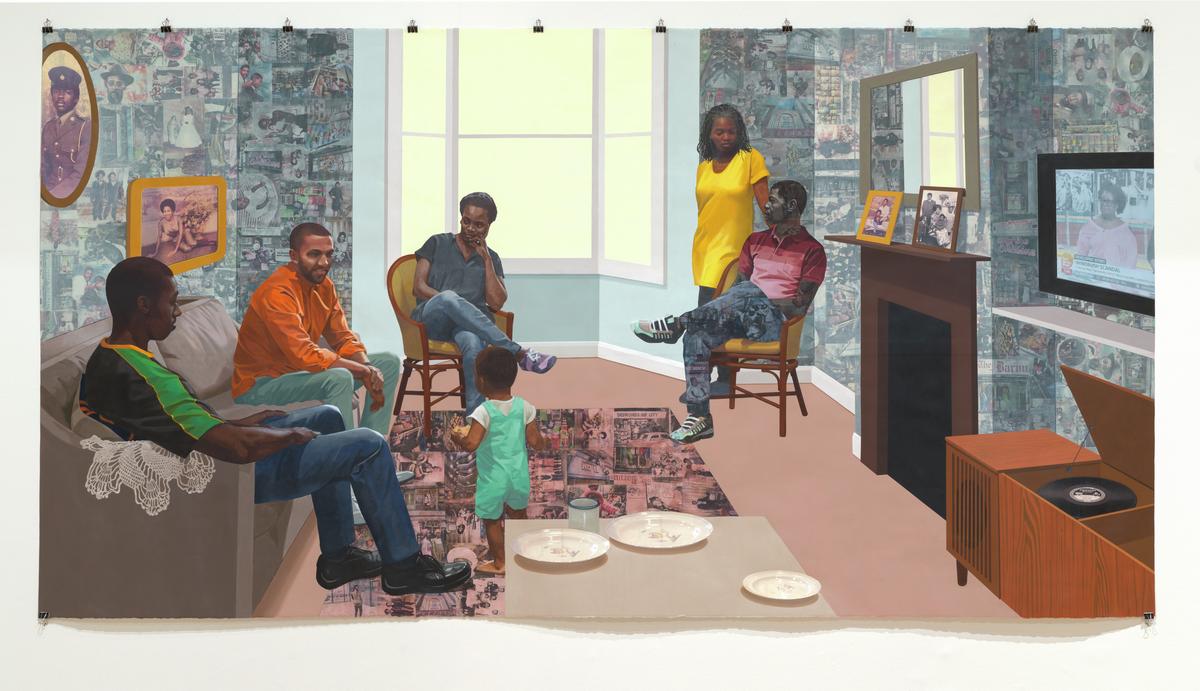
Njideka Akunyili Crosby, Remain, Thriving 2018
Made for Brixton Underground station, this scene imagines a gathering of the grandchildren of the ‘Windrush generation’ who moved to Britain following the 1948 British Nationality Act. The patterned walls, radiogram and hanging pictures are reminiscent of ‘front rooms’ they may associate with their grandparents. The wall imagery derives from photography in Brixton’s Black Cultural Archives, Including portraits of Dub poet Linton Kwesi Johnson and activist Olive Morris. The scene is not simply celebratory: 2018 news of the Windrush scandal’s deportation of commonwealth citizens plays on television.
Gallery label, January 2022
30/30
artworks in Journeys through the Tate Collection
Art in this room












Sorry, no image available



Sorry, no image available



![P80212: [title not known]](jpg/p80212_10.jpg)









You've viewed 6/30 artworks
You've viewed 30/30 artworks
